Rome is a fascinating city dating back thousands of years. The entire city is filled with famous landmarks that everyone in the world will recognize. We took a stroll around the ancient ruins to capture the most amazing monuments in Rome and its famous landmarks that you must not miss when visiting the Eternal City!
Table of Contents
Famous Rome Monuments and Landmarks
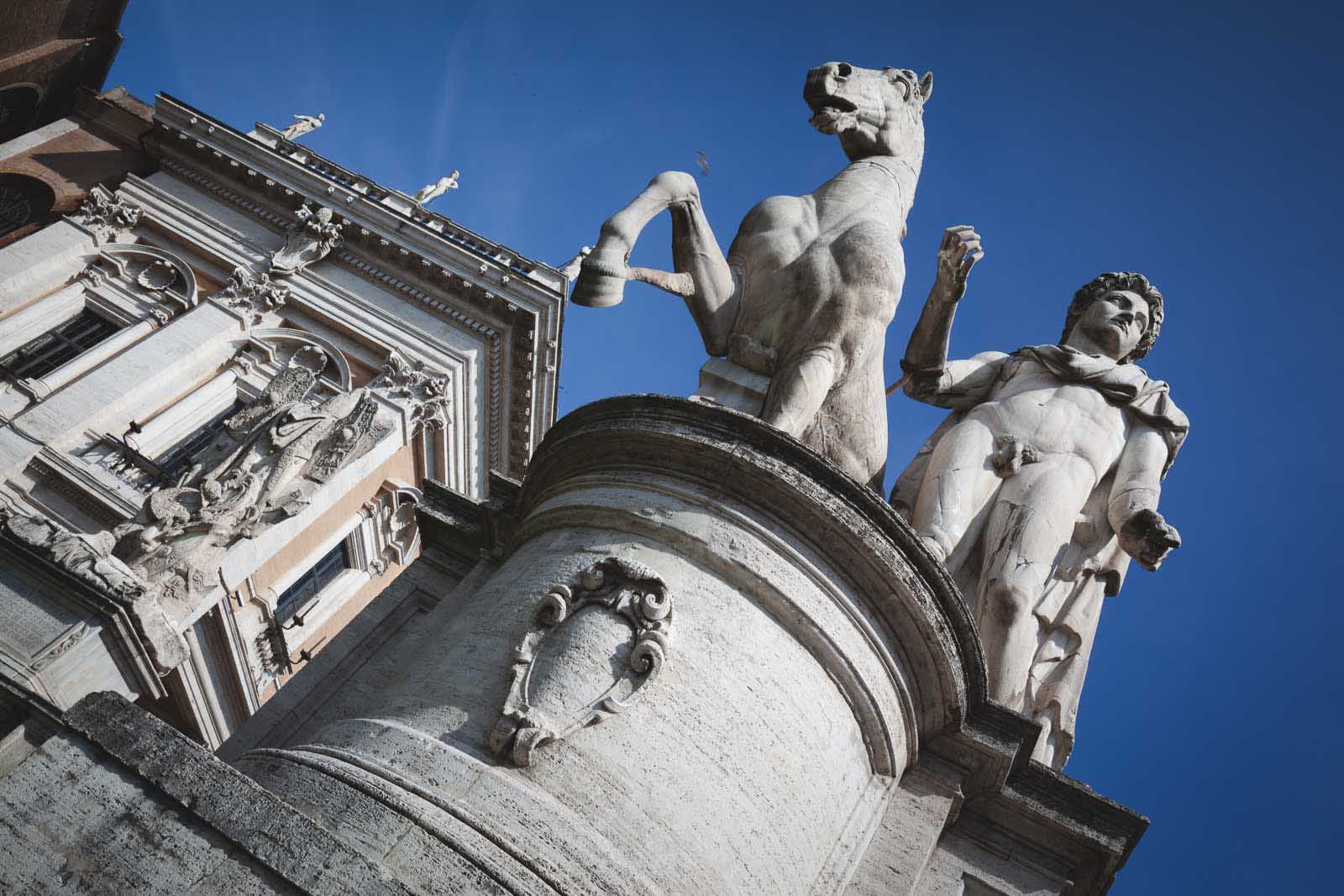
A visit to Rome is a step into ancient times. Rome’s historic center is a UNESCO World Heritage Site where ancient ruins seamlessly blend with modern Roman daily life. You will walk by one historical monument after another without even realizing how significant each is. Sure there are famous monuments like the Colosseum and Roman Forum, and today we are going to take a deep dive into the ancient monuments you already love plus the Rome Landmarks you may not know.
You can even visit a lot of these if you only have a short time in Rome. Just follow our Ultimate One Day in Rome Itinerary: How To Maximize Your Visit.
1. Colosseum
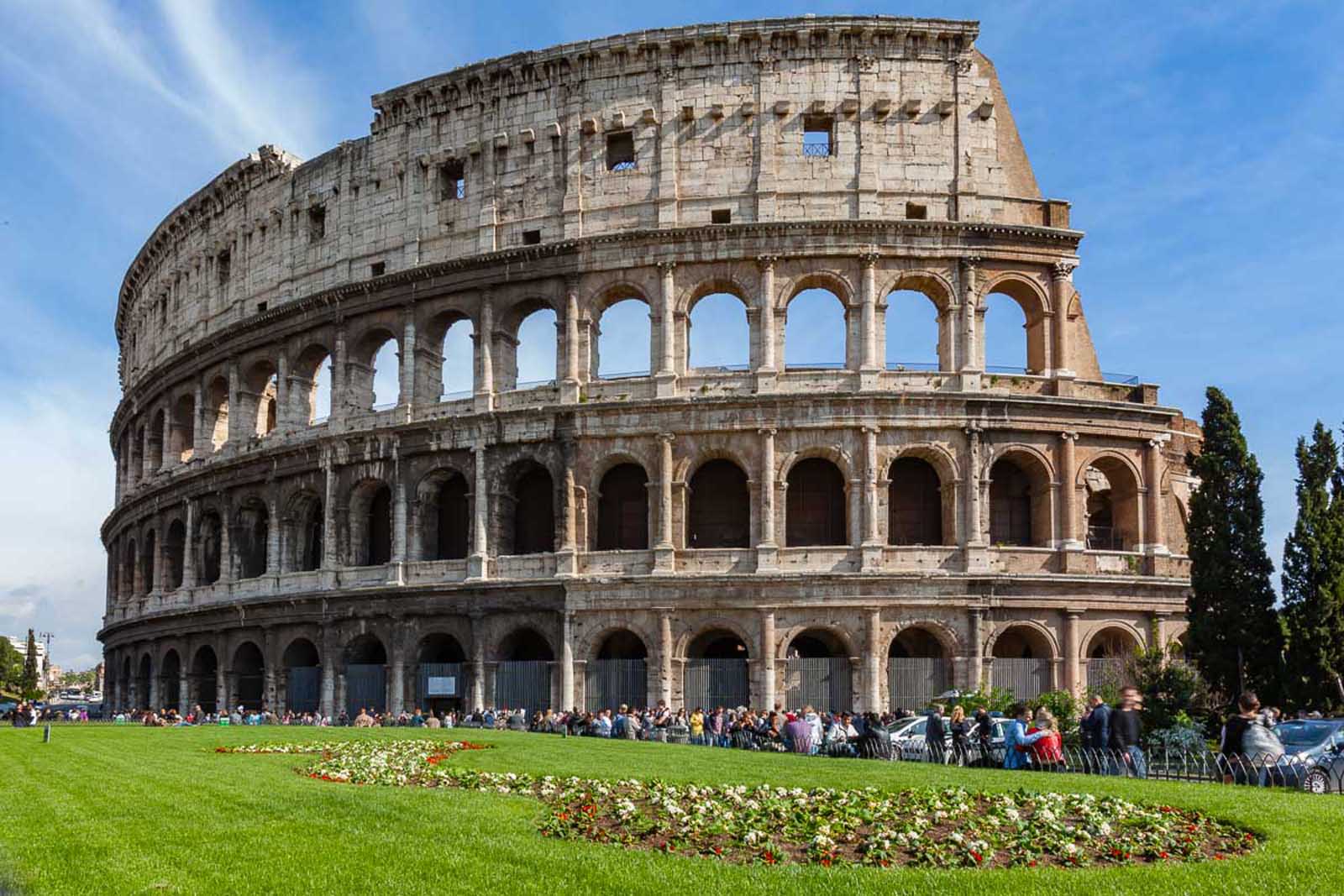
Of all the Rome monuments, the Colosseum is the most famous and most visited. This UNESCO World Heritage Site is the most iconic monument of the Roman Empire. The Colosseum was an amphitheater that could seat up to 50,000 spectators and no visit to Rome would be complete without at least seeing one of the city’s most famous landmarks with your own eyes. This marvel of Roman engineering was used for gladiator matches, public spectacles, and even live theatre.
We were lucky enough to stay in an apartment rental directly across the street from the Colosseum of Rome. We had different perspectives throughout the day and night from our bedroom. This photo of the Colosseum was taken while picnicking on the grassy clearing which we highly recommend. Book this Colosseum, Roman Forum & Palatine Hill Priority Access Guide – Skip the lines on this guided tour of Rome’s most popular monuments.
2. Pantheon
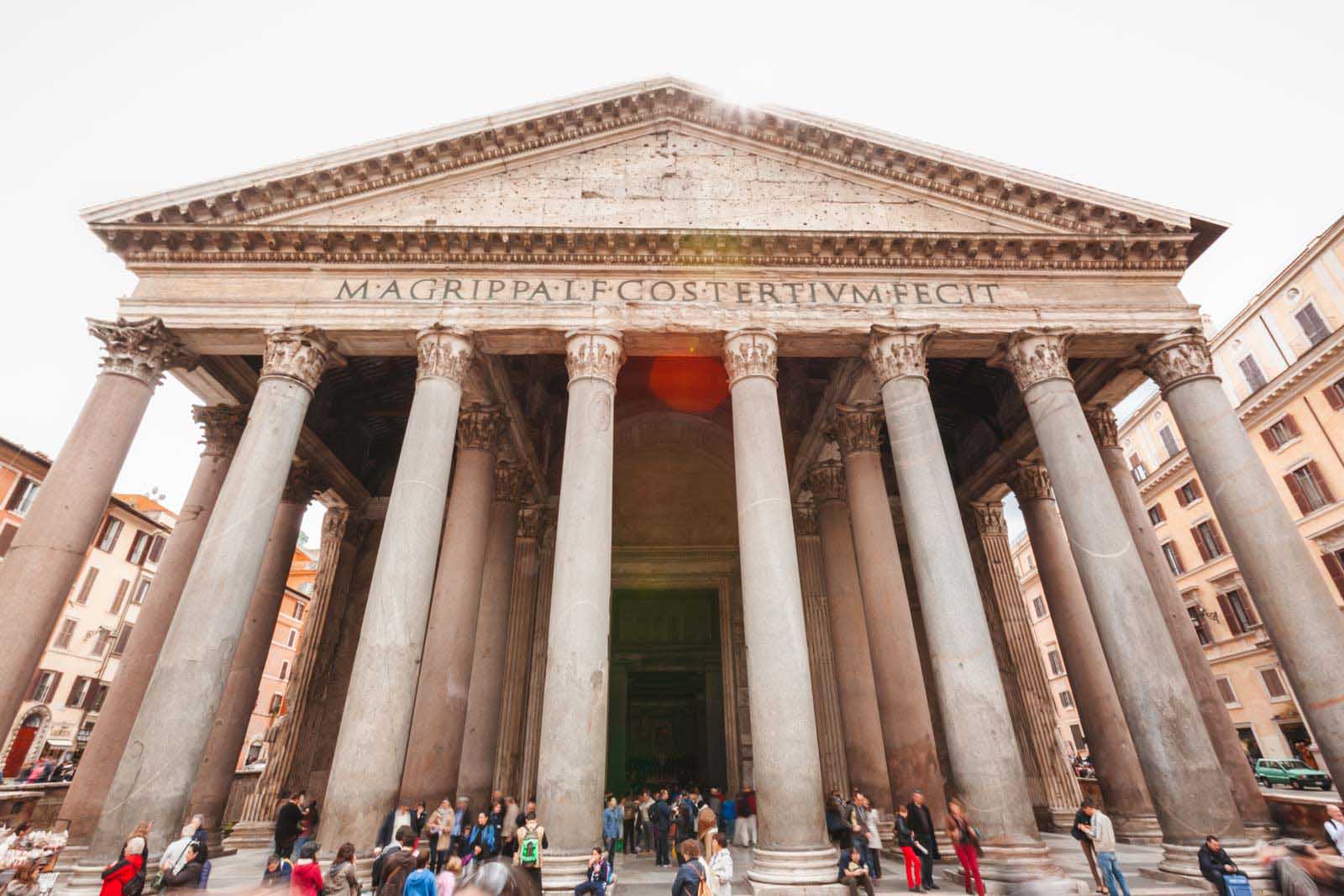
Built as a temple to all the gods of Ancient Rome, The Pantheon is one of the best-preserved Rome monuments in the city and one of Rome’s most visited monuments.
Located in Rome’s historic center it’s a short walk from the Trevi Fountain and Piazza Navona. Entrance to the Pantheon is free and is open to the public. Keep in mind that this is a religious site so cover your shoulders and knees when evering.
The current building has been used as a Christian church since the 7th century. The original Pantheon dates back to 27 BC however it was destroyed by a fire and the building that is standing today was constructed between 118 and 125 AD by Emperor Hadrian. Download your own audio guide of the Pantheon
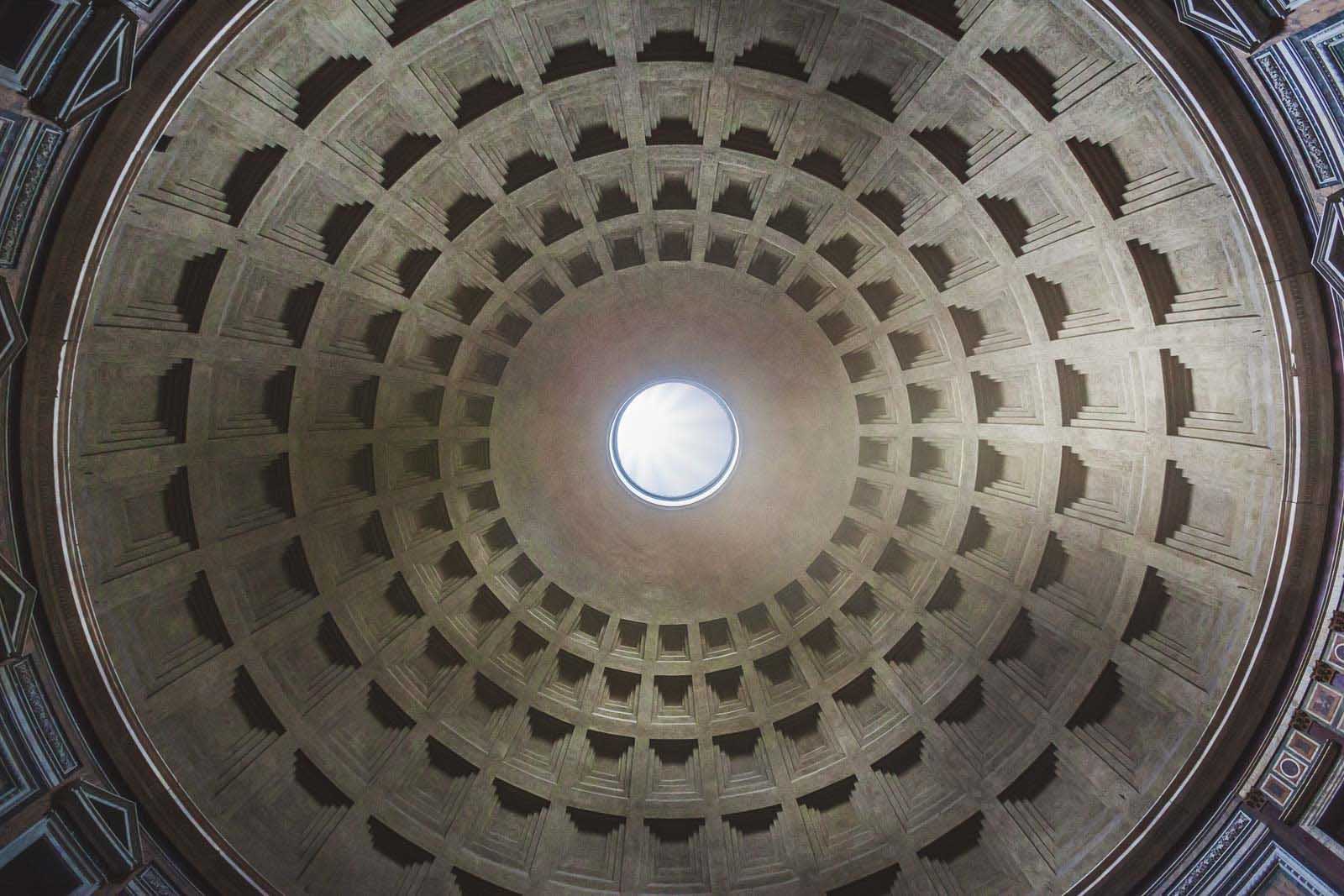
The most impressive site is its massive dome which even today remains the largest unsupported concrete dome in the world. Its oculus is surrounded by 16 granite columns.
When visiting Rome, this is not to be missed. The building has survived remarkably well over the centuries and is considered one of the best-preserved ancient Roman structures in the world.
3. Roman Forum
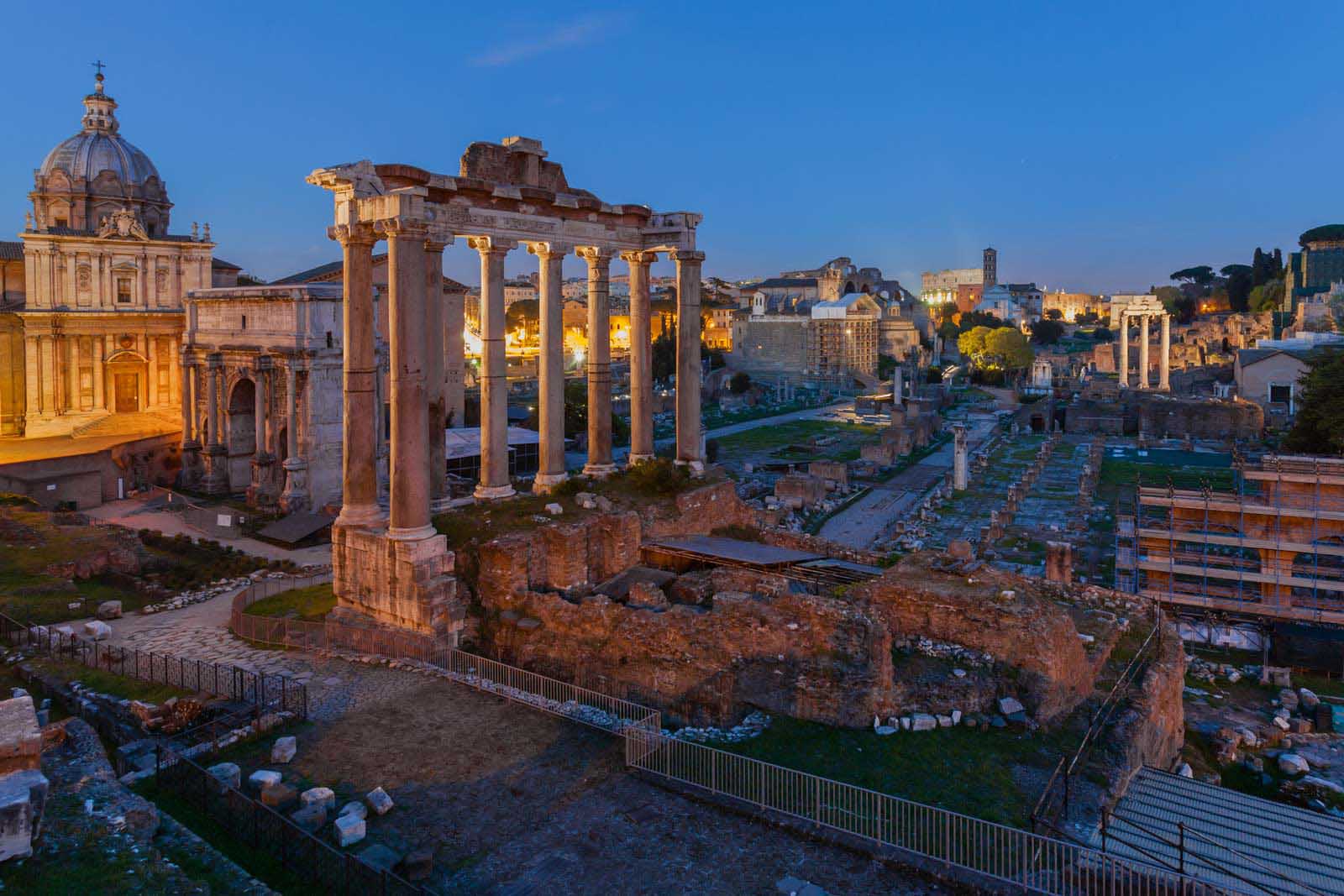
The heart of the Roman Empire and our favorite of all the monuments in Rome, The Roman Forum is a sprawling labyrinth of ruins – temples, basilicas, and arches that were once the ancient buildings and center of Roman public and economic life. It was the gathering place for public meetings with the oldest temple dating back to 500 BC.
The Temple of Saturn stands proudly over the Roman Forum that is located between the Palatine and Capitoline hills. It was one of the most important buildings in Rome housing the empire’s wealth of silver and gold.
The Roman Forum is best visited at night when the crowds are less and when the lights of the city create a setting that takes you back to the times of Gladiators. You can almost imagine the trials, combats, and celebrations that happened within these ancient monuments.
Fun fact, Rome is known for its great style and it’s no wonder, the world’s first shopping mall was built in the Roman Forum, the Trajan’s Market. And Julius Caesar was buried here. This guided tour lets you skip the lines and visit the Colosseum Underground the Roman Forum with a professional guide.
4. Palatine Hill
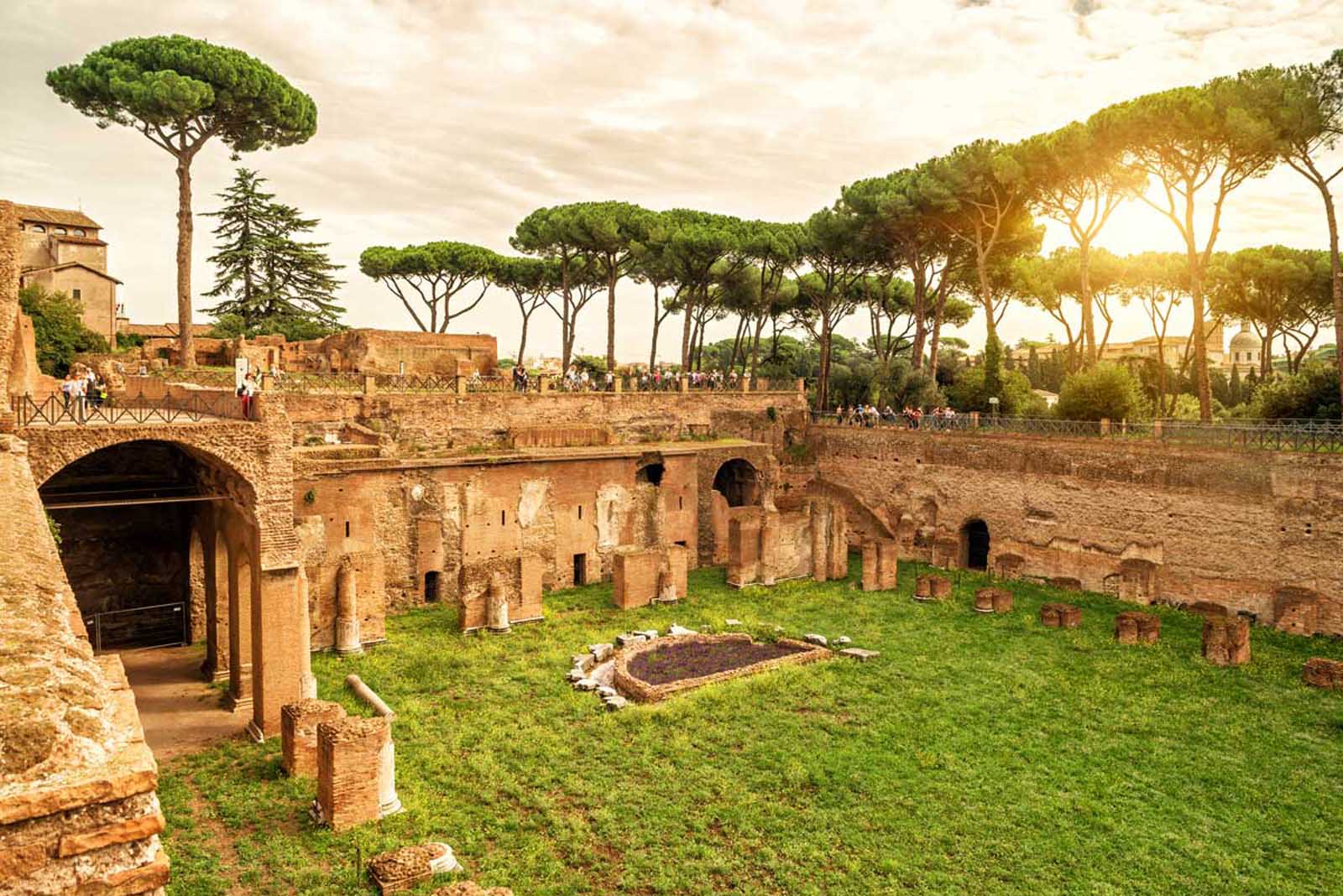
The centermost of the Seven Hills of Rome, Palatine Hill stands 40 meters above the Forum Romanum, offering excellent views of the city and its famous monuments.
Palatine Hill, also known as Palatino in Italian is considered the birthplace of Rome and the site of the ancient imperial palaces. According to legend, it is where the brothers Romulus and Remus were found and raised by the she-wolf, eventually leading to the founding of Rome in 753 BC.
This famous landmark is filled with extensive ruins where visitors can explore the once grand palaces. The hill was the residence of Roman Emperor Augustus as well as Tiberius, and Domitian, as well as various aristocrats and nobles.
Access: Entry to Palatine Hill is typically included in a combined ticket with the Roman Forum and Colosseum. The entrance is near the Arch of Titus on Via di San Gregorio. We recommended this Colosseum, Roman Forum & Palatine Hill Priority Access Guide – Skip the lines on this guided tour of Rome’s most popular monuments.
5. The Vatican
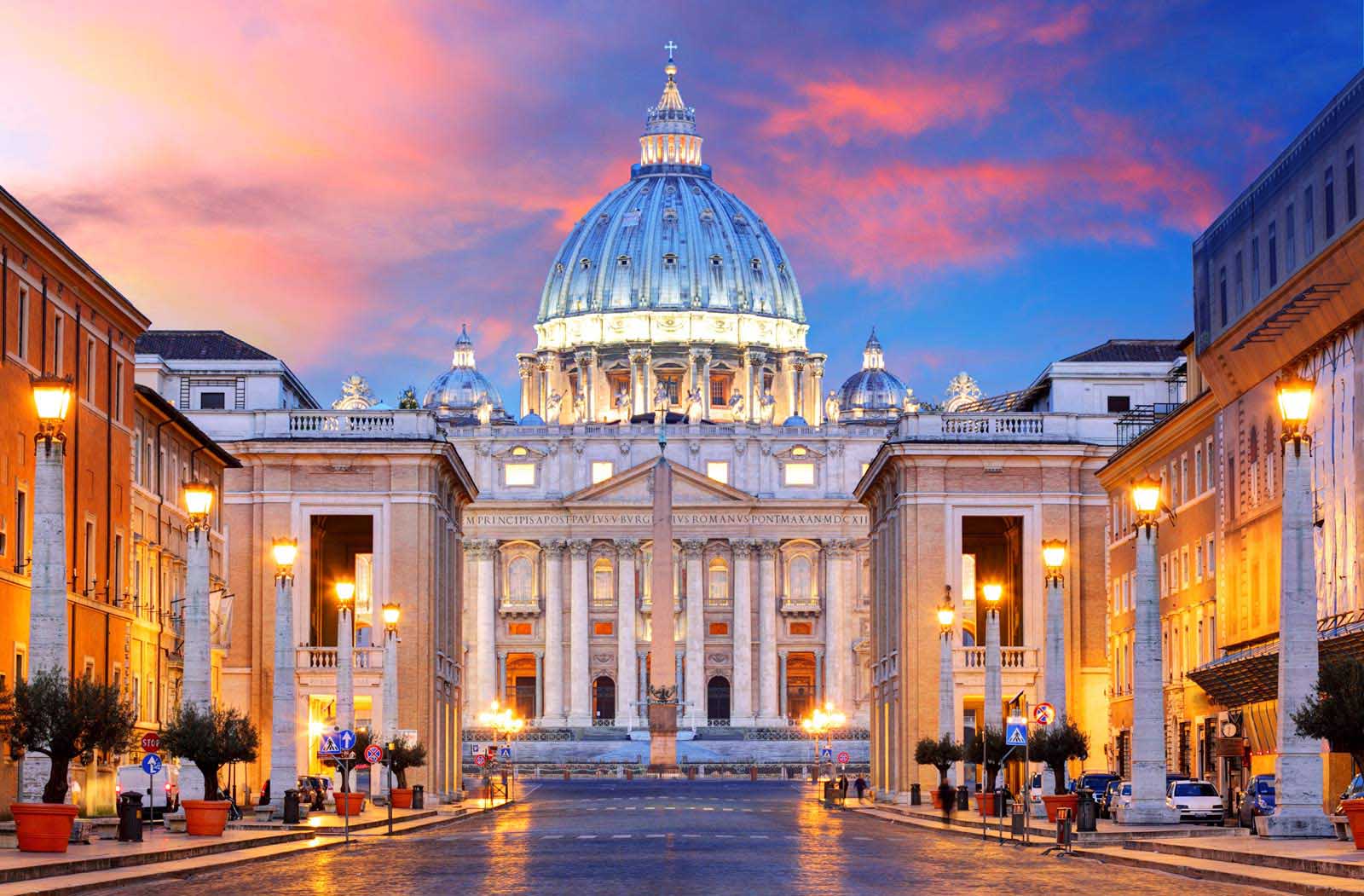
Who hasn’t heard of the Vatican? The Pope resides within the walls of one of the most famous Rome landmarks which isn’t even in Rome! Vatican City is an independent state located right in the heart of the city. Located just north of the City Center, this is one of the most visited places in Rome.
The Vatican is another place overrun with tourists, but we took a Vespa Tour of Rome and stopped by the square in the evening. There was absolutely nobody there. The Pope’s light was one showing that he was home and we waved hello.
However, when you visit Rome, you must go in for a peek, so let’s take a look at what’s inside. Book this Vatican Breakfast for early access and skip the line tickets to the Vatican and St. Peter’s Basilica.
6. St. Peter’s Basilica
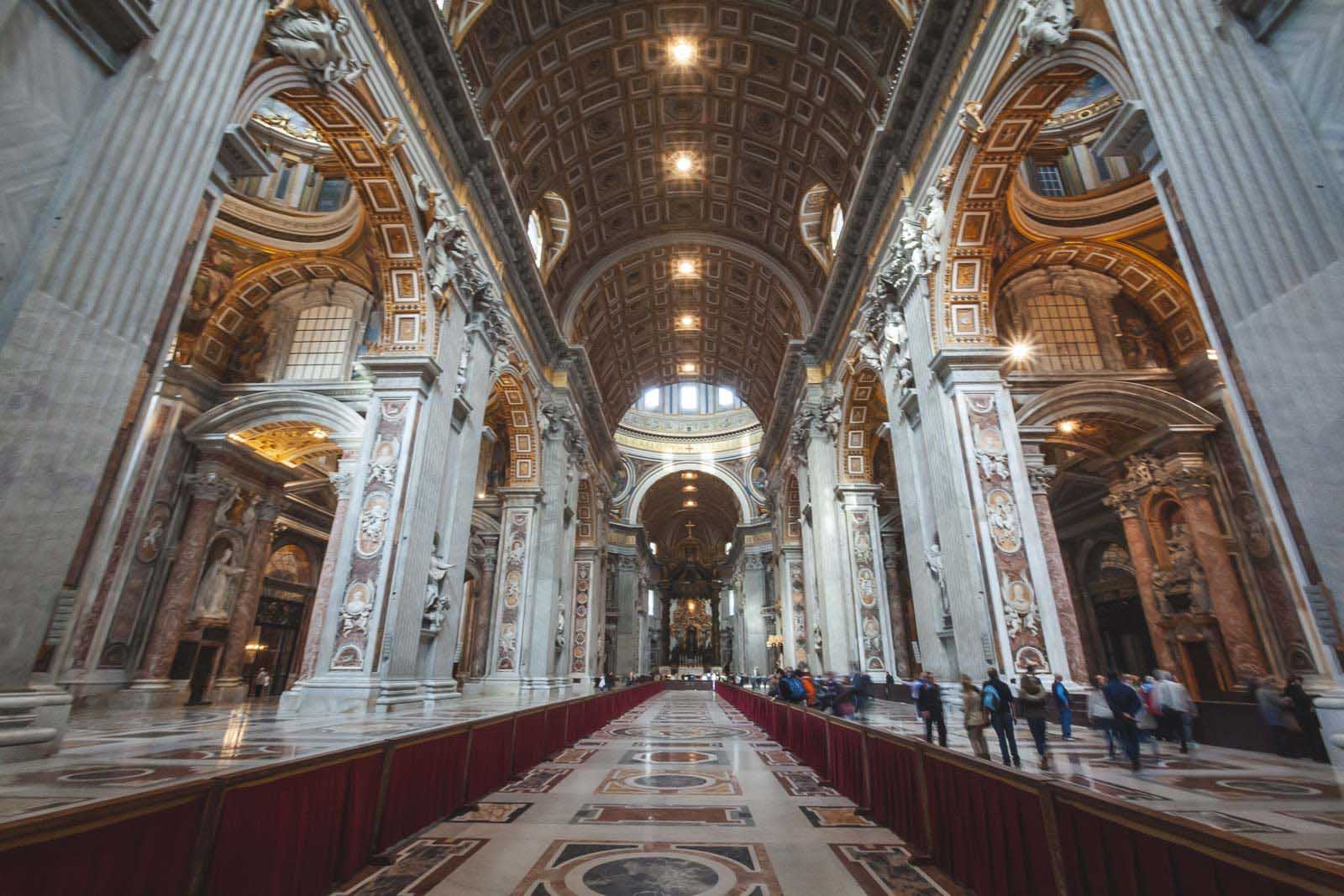
St. Peter’s Basilica is the most famous church on earth. And it is one of the largest churches in the world. We aren’t churchgoers, but even we couldn’t pull ourselves away from the beauty of this ornate building’s Renaissance architecture.
St. Peter’s Basilica is free to enter but be prepared for long lines. It is highly recommended in the high season to book a skip-the-line ticket or a guided tour. We wish we did!
Like the Pantheon, St. Peter’s Basilica is a working church so there is a dress code. Make sure your knees and shoulders are covered and remove any hats. If you really want to see the Pope, he holds a mass in St. Peter’s Square on Wednesdays (if he is in residence).
7. Sistine Chapel

The Sistine Chapel is the most iconic part of the Vatican Museums. Famous for its frescos that decorate the interior, most particularly the Sistine Chapel ceiling, The Creation of Adam, and The Last Judgment by Michelangelo.
Commissioned by Pope Sixtus IV in the 15th century it has become an icon of all the Rome monuments. Michelangelo wasn’t the only artist to adorn its walls, the chapel features frescoes by other Renaissance artists, including Botticelli, Perugino, Ghirlandaio, and Rosselli.
When visiting the Sistine Chapel, you must purchase a ticket to the Vatican Museums. No photography or videography is allowed (hence why we have a stock photo for our picture) and entrances are time with a limit for each visit. For entry to St. Peter’s Basilica, the Vatican and Sistine Chapel make sure to book skip the line timed tickets in advance.
8. Trevi Fountain
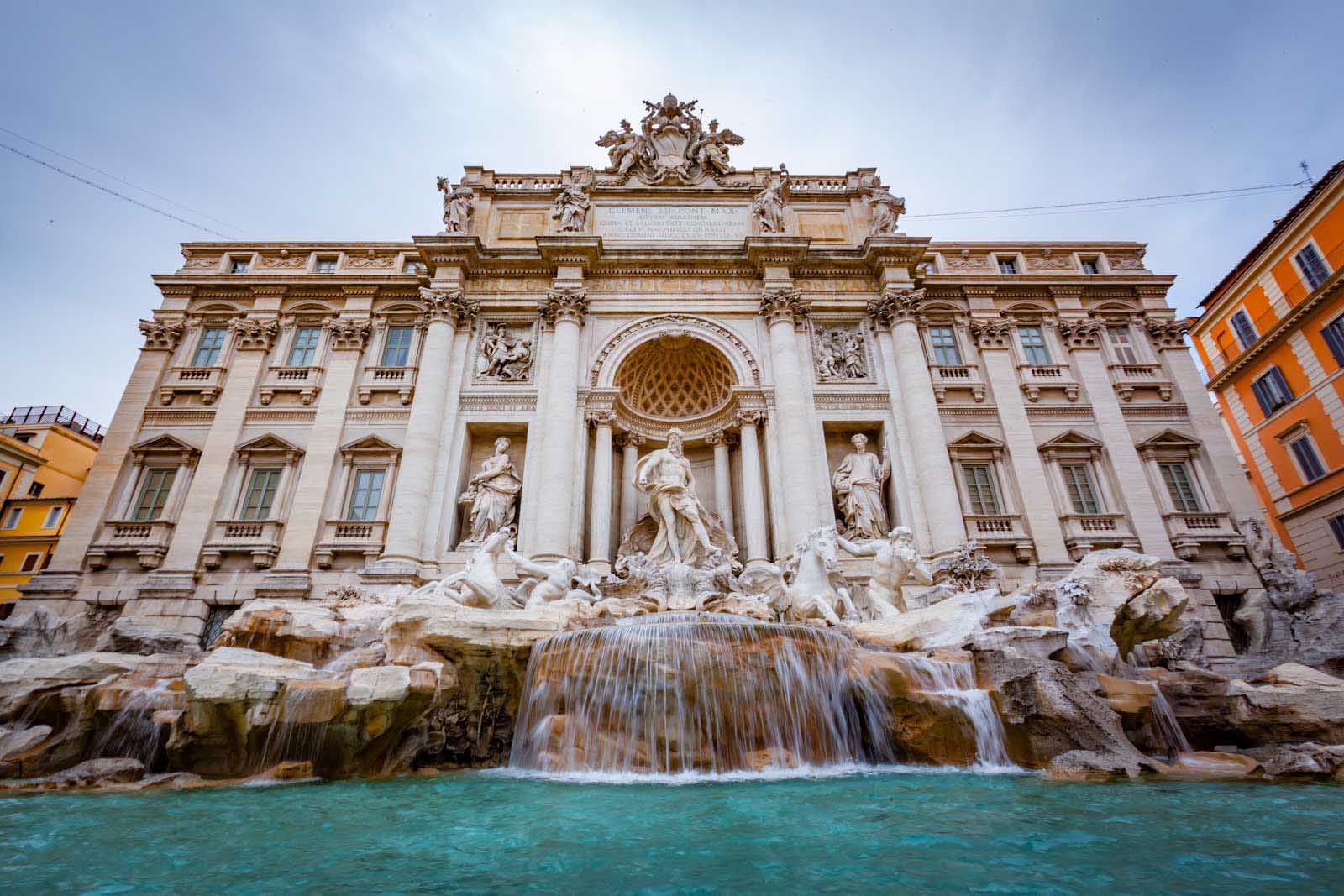
Of all the monuments in Rome, the Trevi Fountain is probably the most crowded and chaotic. This famous fountain is an ornate Baroque fountain and is always surrounded by hoards of tourists. If you can go early in the morning or late at night, you’ll be able to beat the crowds. When we visited Rome, we went at midnight and had it all to ourselves.
Named after its location at the junction of Tre Vie (three roads) The Trevi Fountain showcases scenes from Roman Mythology with Neptune, the Roman God of the Sea riding his chariot. It has been restored to its former grandeur allowing tourists to marvel at its intricate details.
The Trevi Fountain is located in the heart of Rome’s historic center close to other historical monuments such as the Spanish Steps and the Pantheon.
Legend has it that if you toss a coin into this famous fountain, it ensures your return to Rome. We tossed a coin on our first trip and returned to Rome, so we can attest, that it just may be true!
9. Spanish Steps
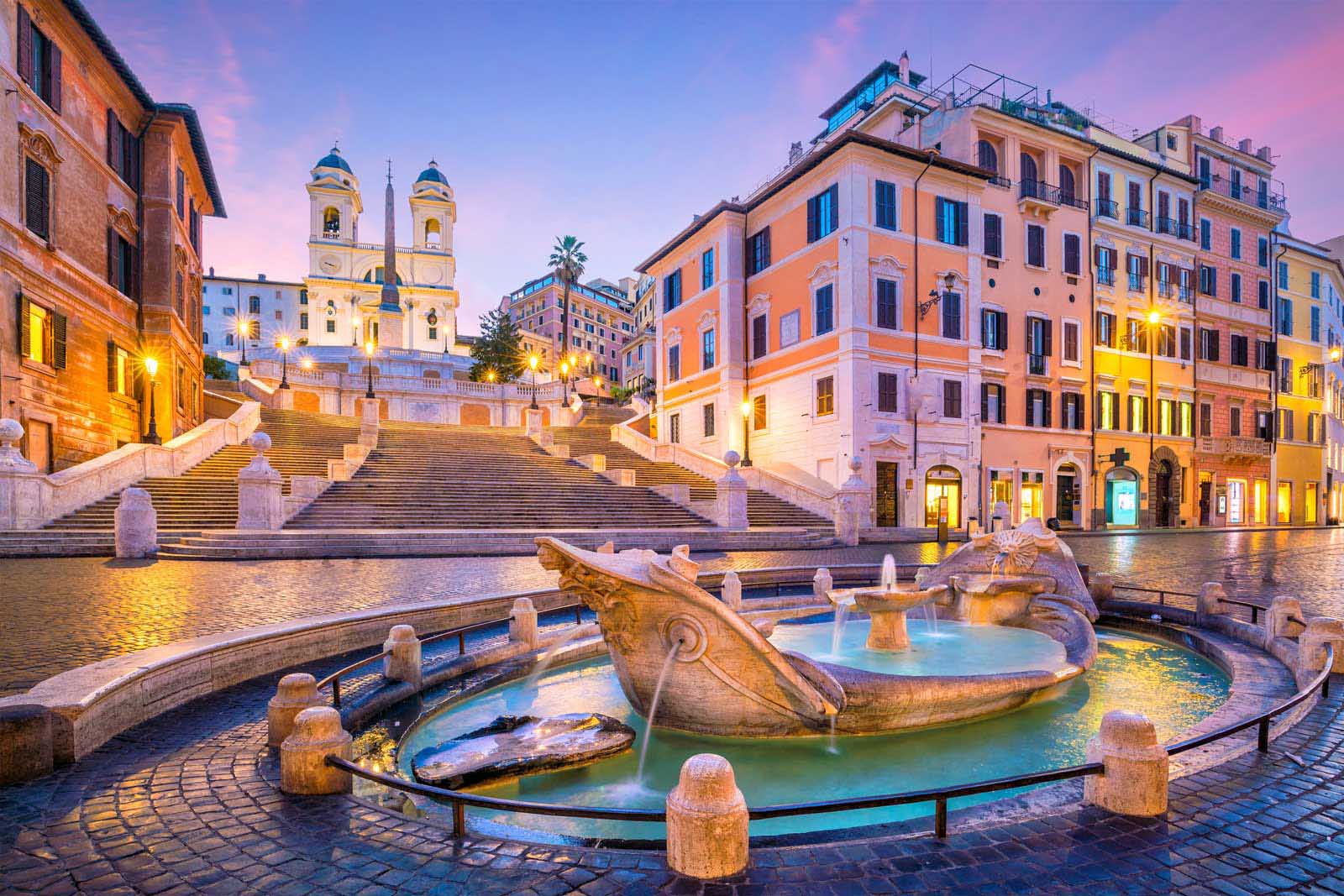
The Spanish Steps (Scalinata di Trinità dei Monti in Italian) are not a part of Ancient Rome, but they are a monumental stairway of 135 steps that were built in the 18th century. They are a great spot to sit down and enjoy the atmosphere and views of the Piazza di Spagna.
The Piazza di Spagna is located at the base of the steps and is a bustling square known for its picturesque fountain called the “Fontana della Barcaccia” (Fountain of the Ugly Boat), which was designed by Pietro Bernini and his son, Gian Lorenzo Bernini.
The top of the steps begins at the Piazza Trinità dei Monti which houses the Trinità dei Monti church. While not one of the ancient Roman monuments, the Spanish Steps hold a special place in Rome’s history and serve as a prominent meeting point and architectural gem in the city.
The Spanish Steps are truly one of the iconic Rome landmarks featured in films such as Roman Holiday, Mission Impossible Dead Reckoning Part 1, and The Talented Mr. Ripley.
10. Castel Sant’Angelo
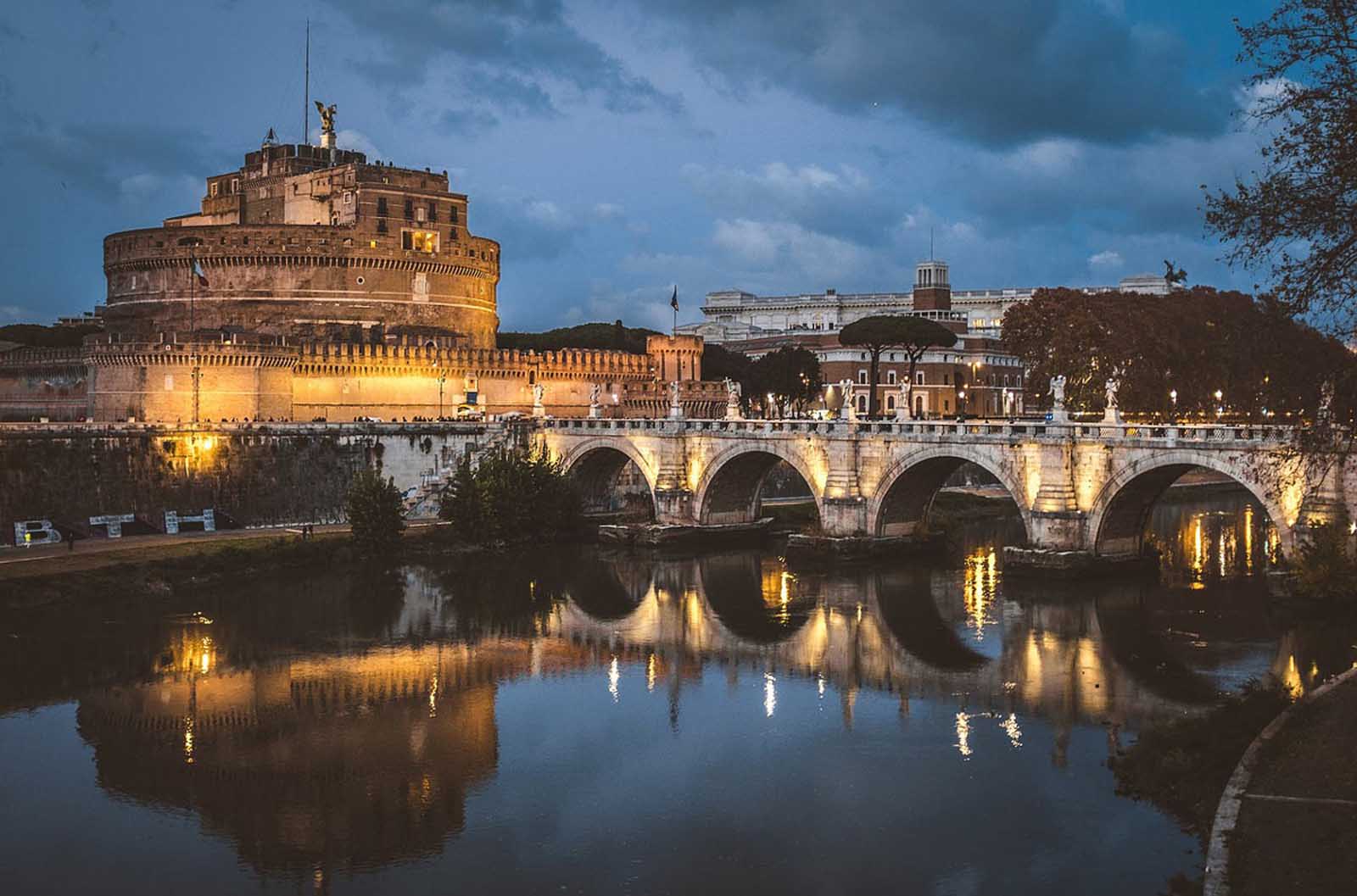
Initially commissioned by the Roman Emperor Hadrian as a mausoleum for himself and his family, Castel Sant’Angelo was later used by the popes as a fortress and castle. Today, this monument of Ancient Rome is a museum where you can visit the Tomb of the Roman emperor Hadrian.
Also known as the Hadrian’s Mausoleum, this historic fortress is located on the right bank of the River Tiber. The building’s name, Castel Sant’Angelo (Castle of the Holy Angel), derives from a legend that Archangel Michael, appeared atop the mausoleum sheathing his sword as a sign of the end of a plague in 590 AD.
Admission to this historic monument on the River Tiber can be combined with other attractions such as the Vatican Museums. As with everything in Rome, we recommend booking skip the line tickets ahead of time.
11. Arch of Constantine
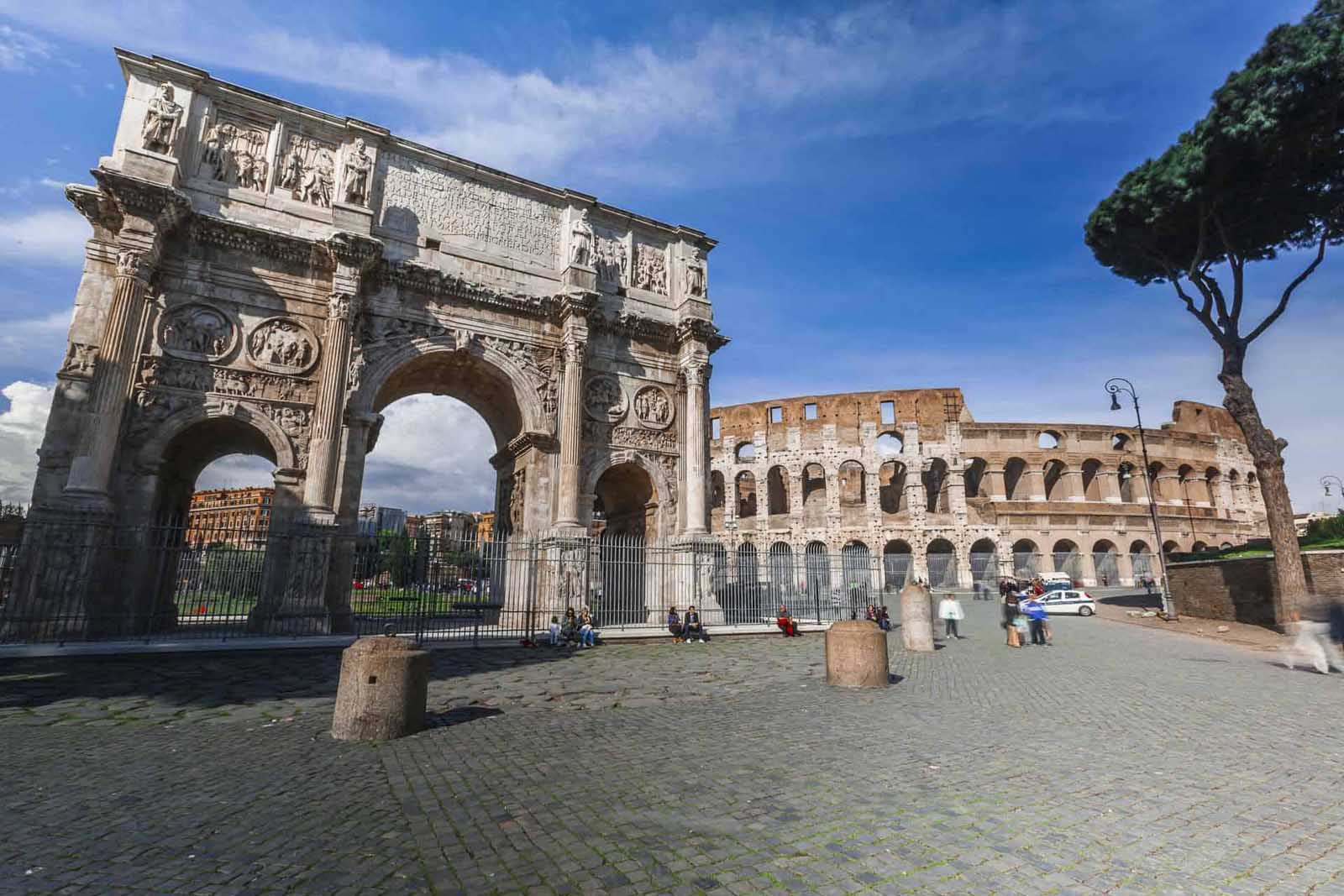
A triumphal arch in the historic center of Rome, the Arch of Constantine was erected to commemorate Constantine I’s victory over Maxentius at the Battle of Milvian Bridge in 312. It is located next to the Colosseum and is one of the easiest and quickest Rome landmarks to visit.
The arch was erected to commemorate the victory of Emperor Constantine I (Constantine the Great) in the Battle of Milvian Bridge in 312 AD, which resulted in his rise to power as the sole ruler of the Roman Empire.
The Arch of Constantine may not be as massive as the other famous landmarks in Rome but it is a significant historical and artistic monument, symbolizing the transition from the pagan Rome to the Christian Byzantine Empire under Constantine’s rule. Visit the Colosseum at night on this Night Tour that includes the arena floor. The Arch of Constantine is a short walk from here.
12. Piazza Venezia
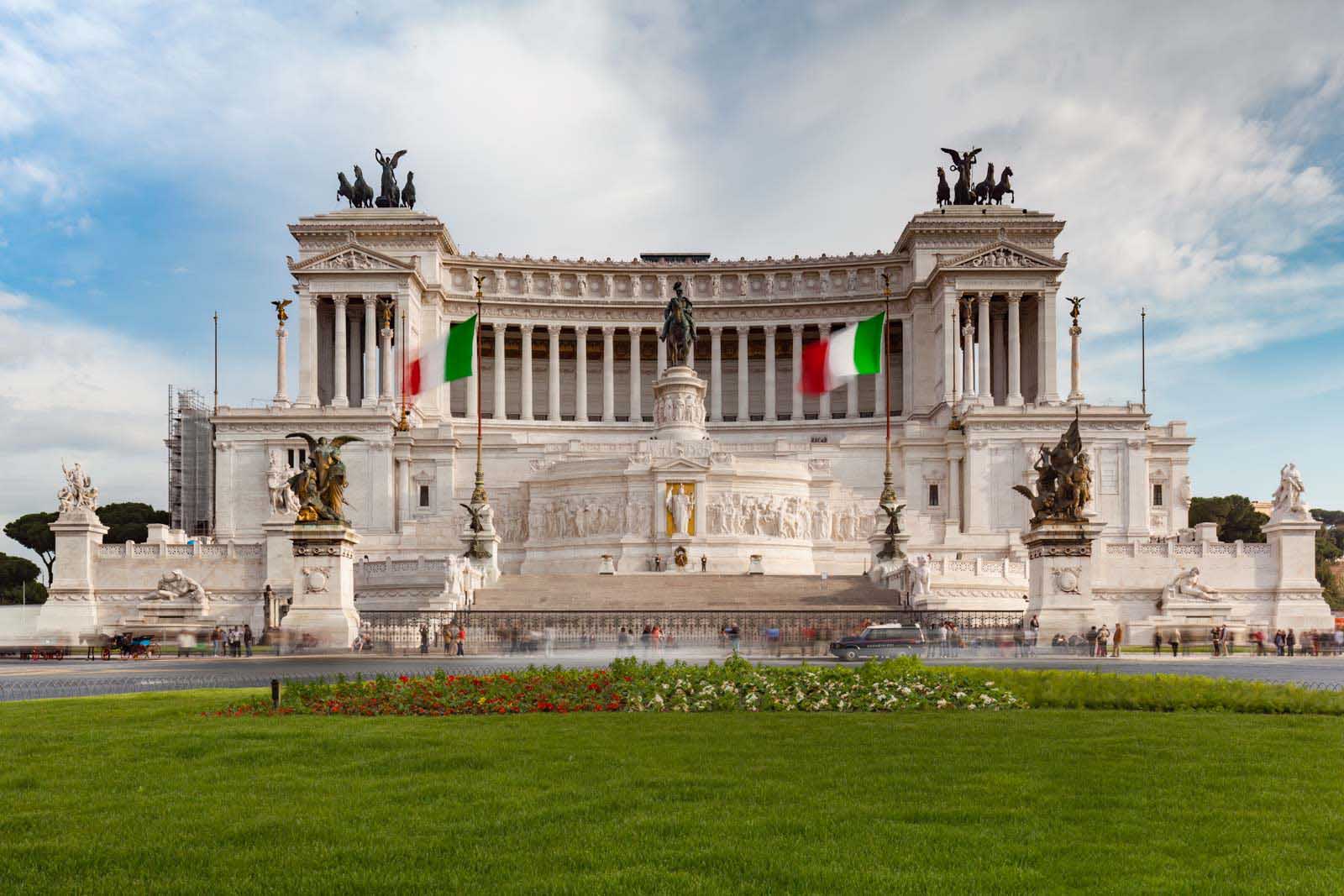
An important traffic hub of Rome, Piazza Venezia is the starting point of the Via dei Fori Imperiali leading towards the Colosseum. Palazzo Venezia is a prominent Renaissance palace that dominates the square. The palace was originally built as the residence of Cardinal Pietro Barbo, who later became Pope Paul II.
Altare della Patria (Monumento Nazionale a Vittorio Emanuele II) is located at the northern end of the square and stands at the heart of this busy roundabout. This massive structure made of white marble was built in honor of Victor Emmanuel II, the first king of a united Italy. It is a symbol of Italian nationalism and boasts an impressive colonnade, statues, and a viewing terrace.
Visitors can explore the Palazzo Venezia, Climb the Altare della Patria for panoramic views of Rome. You will also find the eternal flame burning at the Tomb of the Unknown Soldier here.
13. Basilica di Santa Maria Maggiore
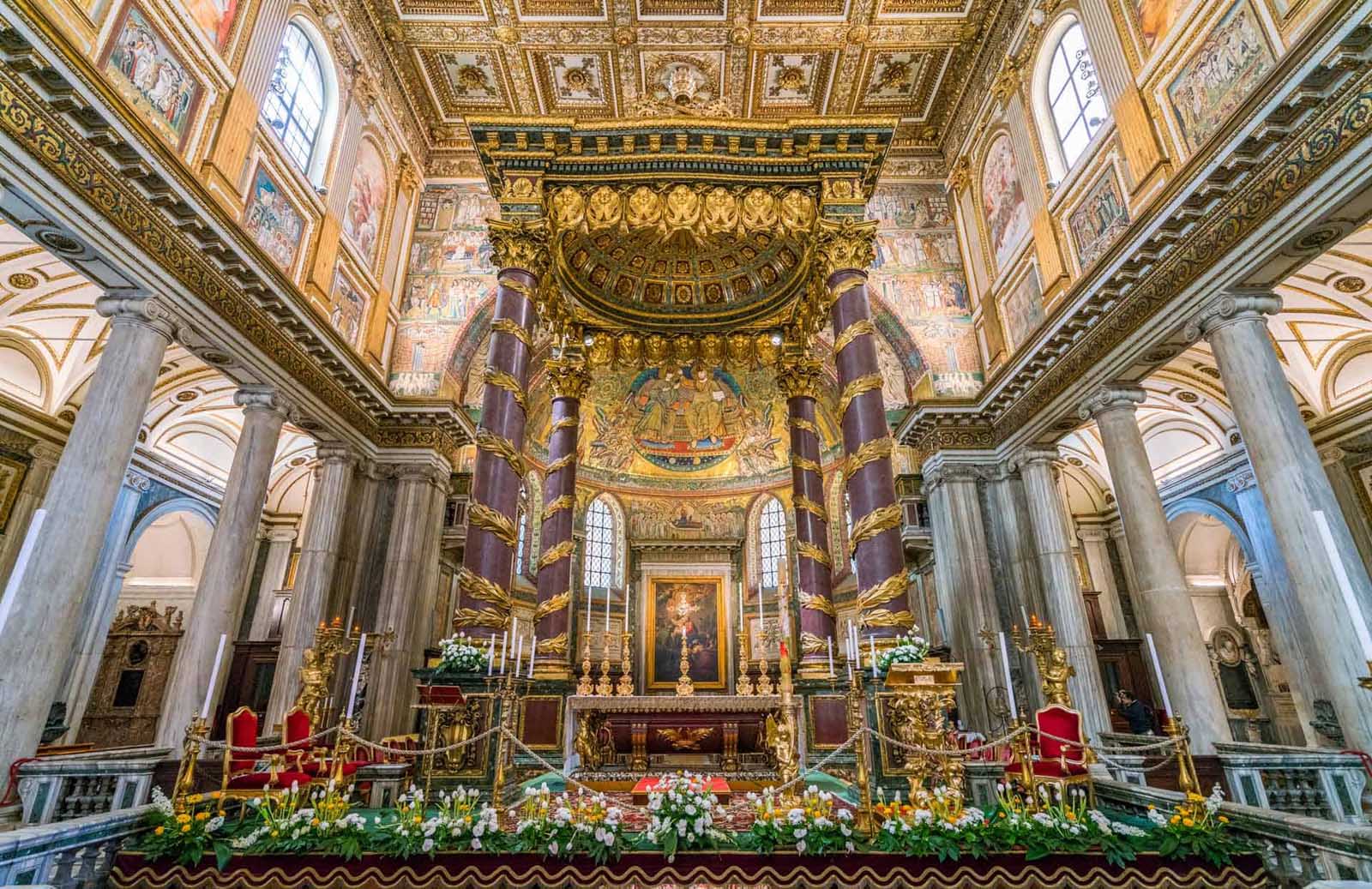
One of the four papal basilicas in Rome, Basilica di Santa Maria Maggiore is renowned for its magnificent interior, mosaics, and the relic of the Holy Crib. It is an important Catholic church and a popular pilgrimage site as it is one of the oldest churches dedicated to the Virgin Mary dating back to 432 AD.
This beautiful basilica may not be as famous as other Rome monuments, but when you visit Rome, it is worth stopping in to see its combination of Romanesque, Baroque, and Renaissance architecture adorned with mosaics, statues, and columns.
14. Piazza Navona
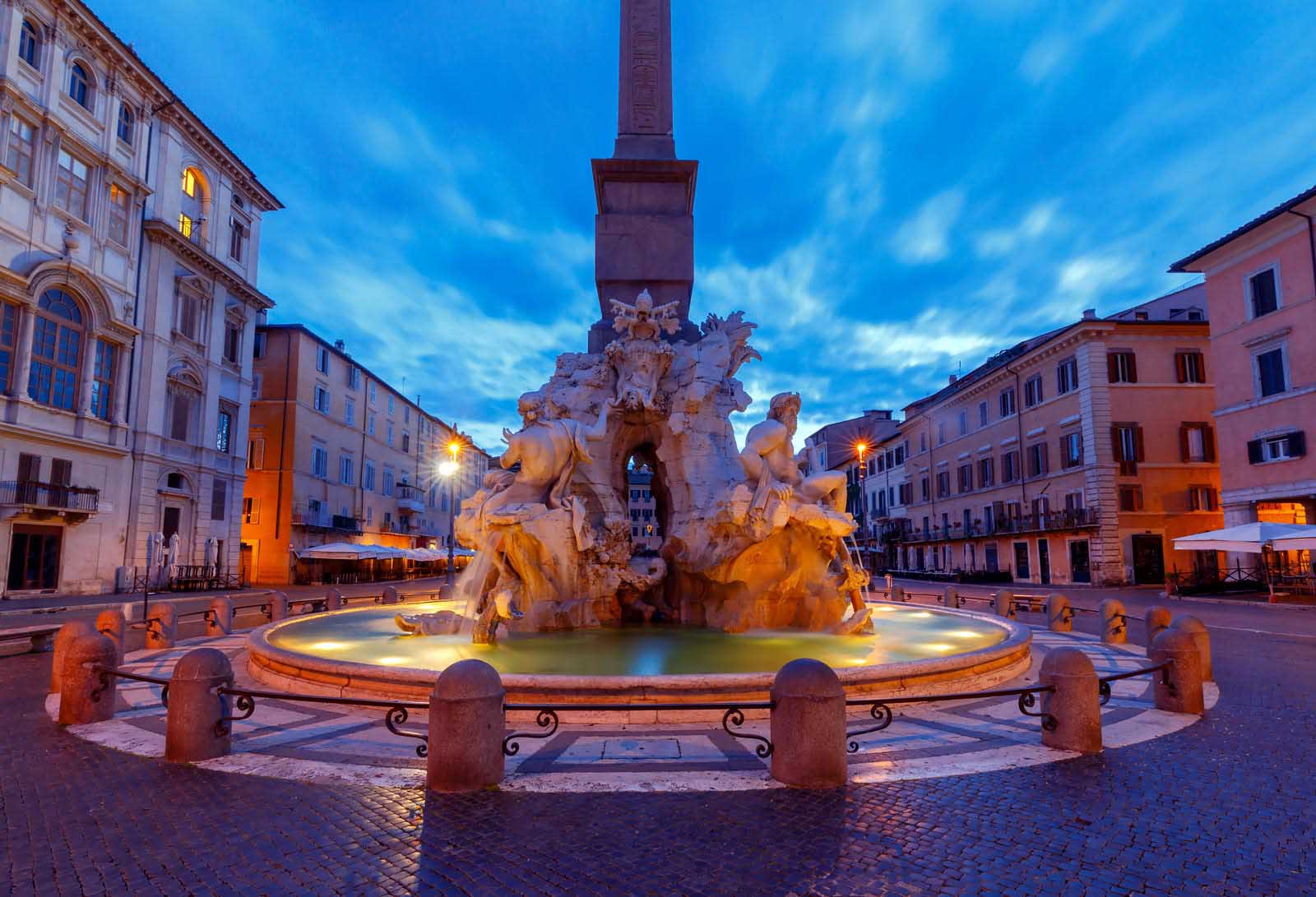
An iconic square in Rome the Piazza Navona follows the plan of an ancient Roman circus, the 1st century Stadium of Domitian, where the Romans came to watch games.
The stadium was transformed into a public square during the 15th century. Its elongated shape reflects the outline of the original stadium and today Piazza Navona is one of the city’s most beloved public spaces.
The center of the square is the Fontana dei Quattro Fiumi (Fountain of the Four Rivers), designed by Gian Lorenzo Bernini. It represents four major rivers from different continents: the Nile, Ganges, Danube, and Rio de la Plata.
Located in the historic center of Rome, Piazza Navona is a great place to sit back and enjoy a coffee or cocktail while taking in the energetic vibe of street performers and musicians.
15. Villa Borghese Gardens
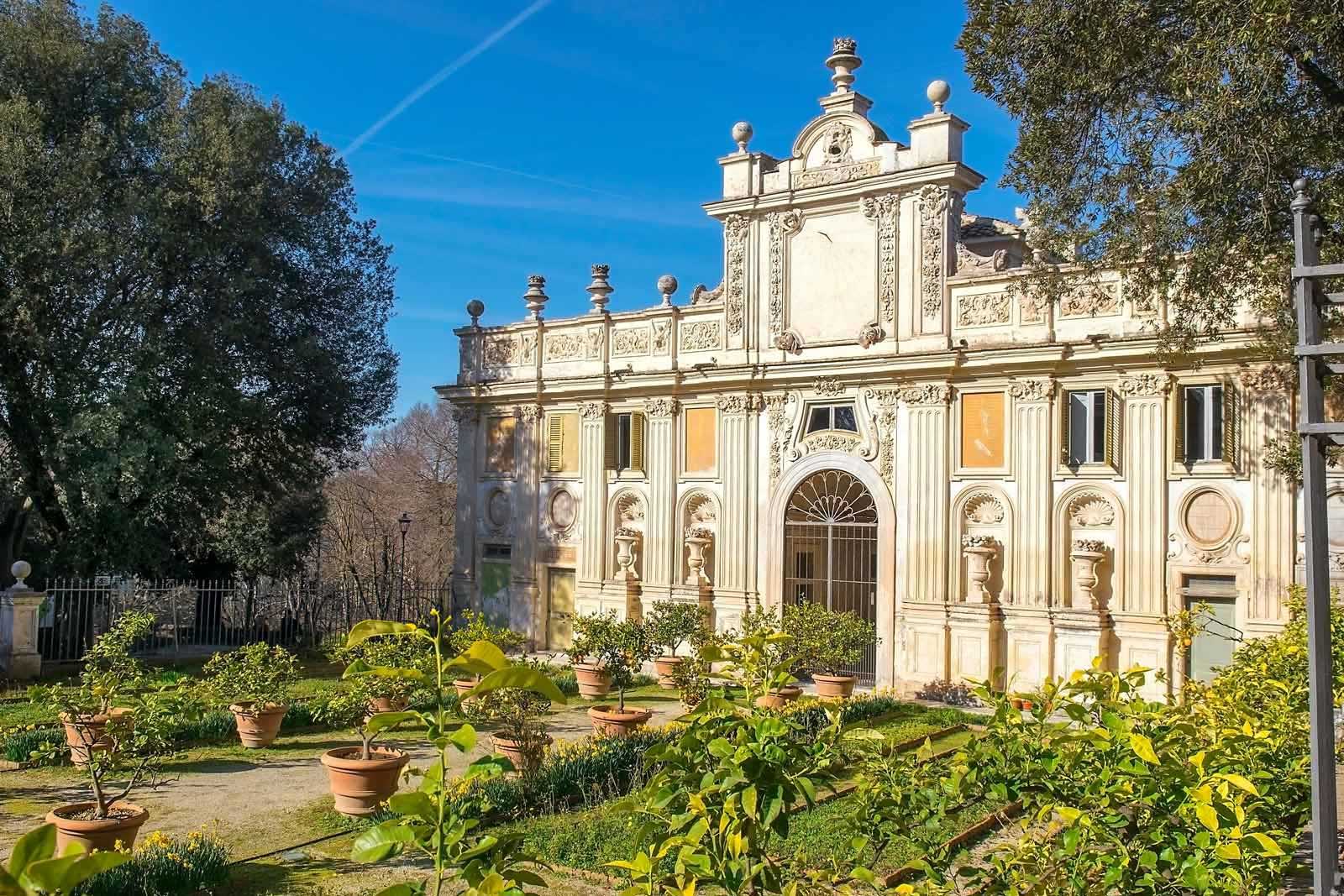
The Villa Borghese Gardens, also known as Parco della Villa Borghese is one of the largest parks in the city. The park is named after the Borghese family, who once owned the estate that the park now occupies.
The history of Villa Borghese dates back to the early 17th century when Cardinal Scipione Borghese, a member of the powerful Borghese family, decided to transform the former vineyard into a magnificent garden.
One of the highlights of the park is the Galleria Borghese, a renowned art museum housed in a villa within the park. The museum displays a remarkable collection of sculptures, paintings, and other artworks, including masterpieces by renowned artists such as Caravaggio, Bernini, and Raphael. The museum requires advance booking for entry due to the limited number of visitors allowed at a time.
16. Pyramid of Cestius
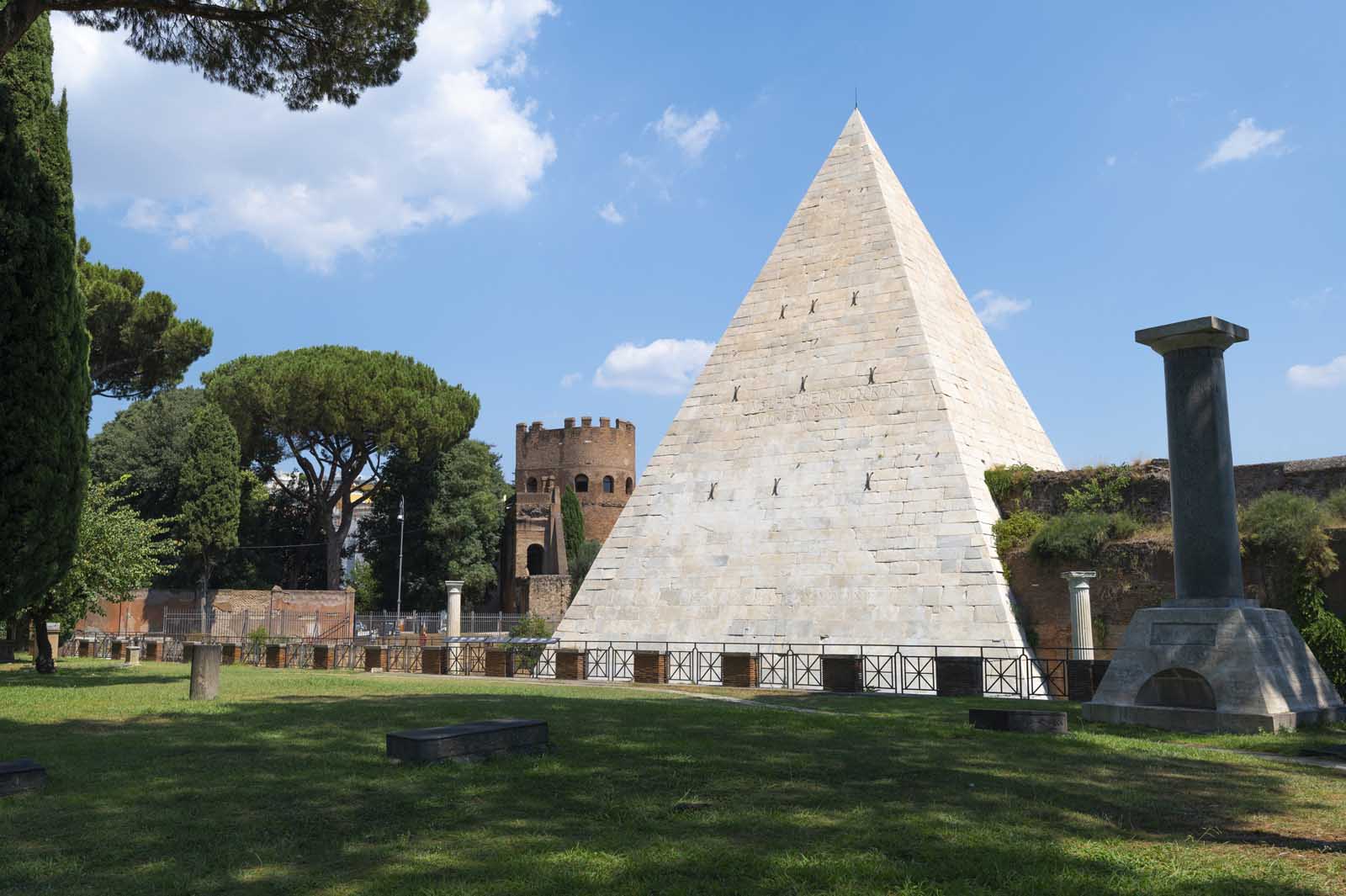
This ancient pyramid in the Protestant Cemetery near the Porta San Paolo was built as a tomb for Gaius Cestius and is one of the best-preserved ancient buildings in Rome. It is one of the few surviving examples of an Egyptian-style pyramid outside of Egypt.
It is an imposing site with the pyramid standing 36 meters (118 feet) tall. You cannot go inside the pyramid but it is an amazing structure to see and it is worth visiting the Protestant Cemetery to see the famous tombstones. The cemetery is similar to the Cimetiere Pere LaChase in France.
While not as well-known as other ancient Roman landmarks, the Pyramid of Cestius offers an intriguing glimpse into the Roman Empire’s fascination with Egyptian culture and serves as a testament to the city’s rich historical tapestry.
17. Trajan’s Column
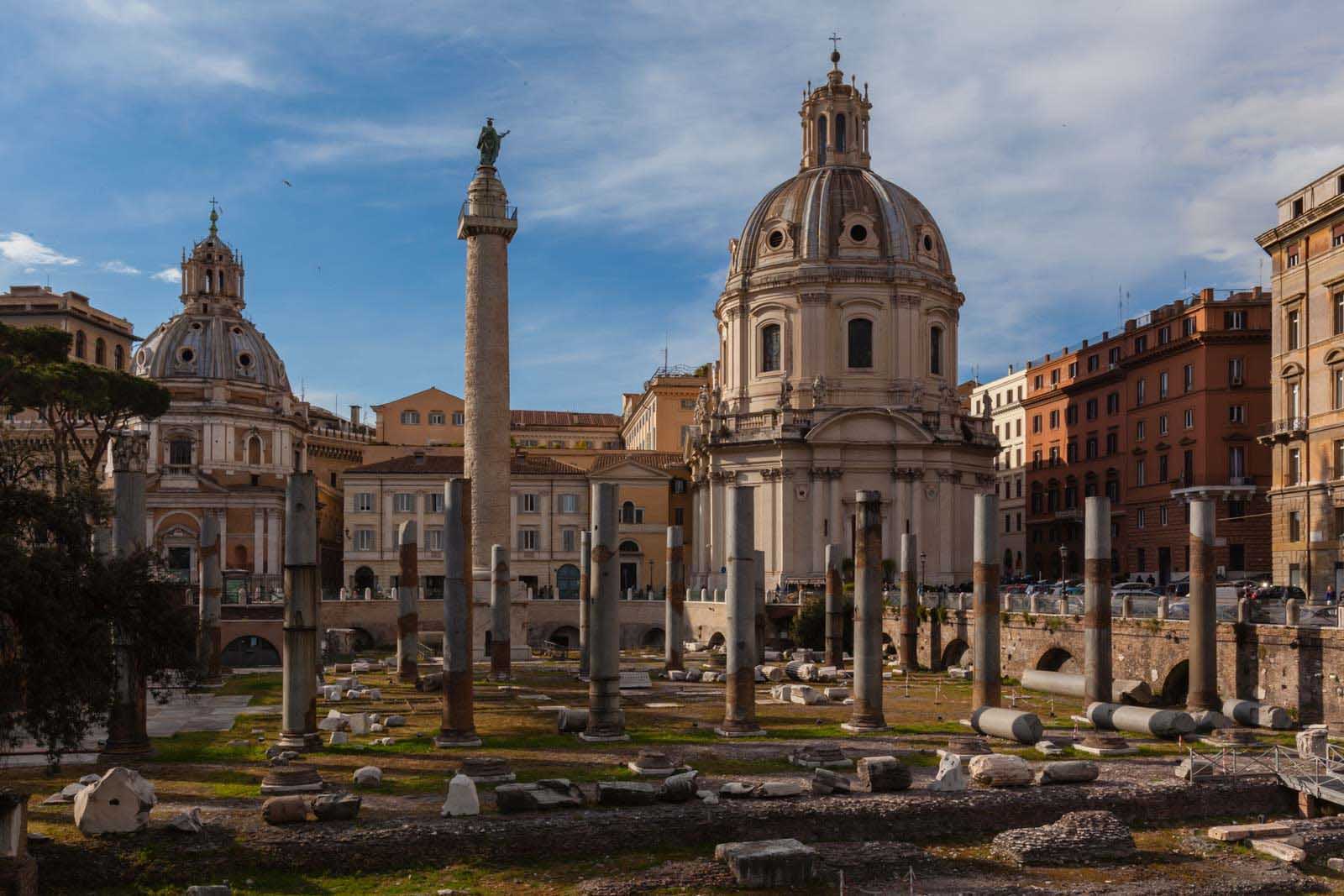
Trajan’s Column stands in the Forum of Trajan which is a large complex built by Roman Emperor Trajan in the 1st century AD. The impressive column stands approximately 30 meters (98 feet) tall, including its pedestal in Trajan Forum.
It is one of the most famous Roman monuments and the best-preserved triumphal column still standing in Rome.
Trajan Forum can be reached by walking from the Colosseum or the Roman Forum. Visitors can observe the column from the ground level of the forum. Unfortunately, access to the interior of the column is not permitted.
18. The Column of Marcus Aurelius
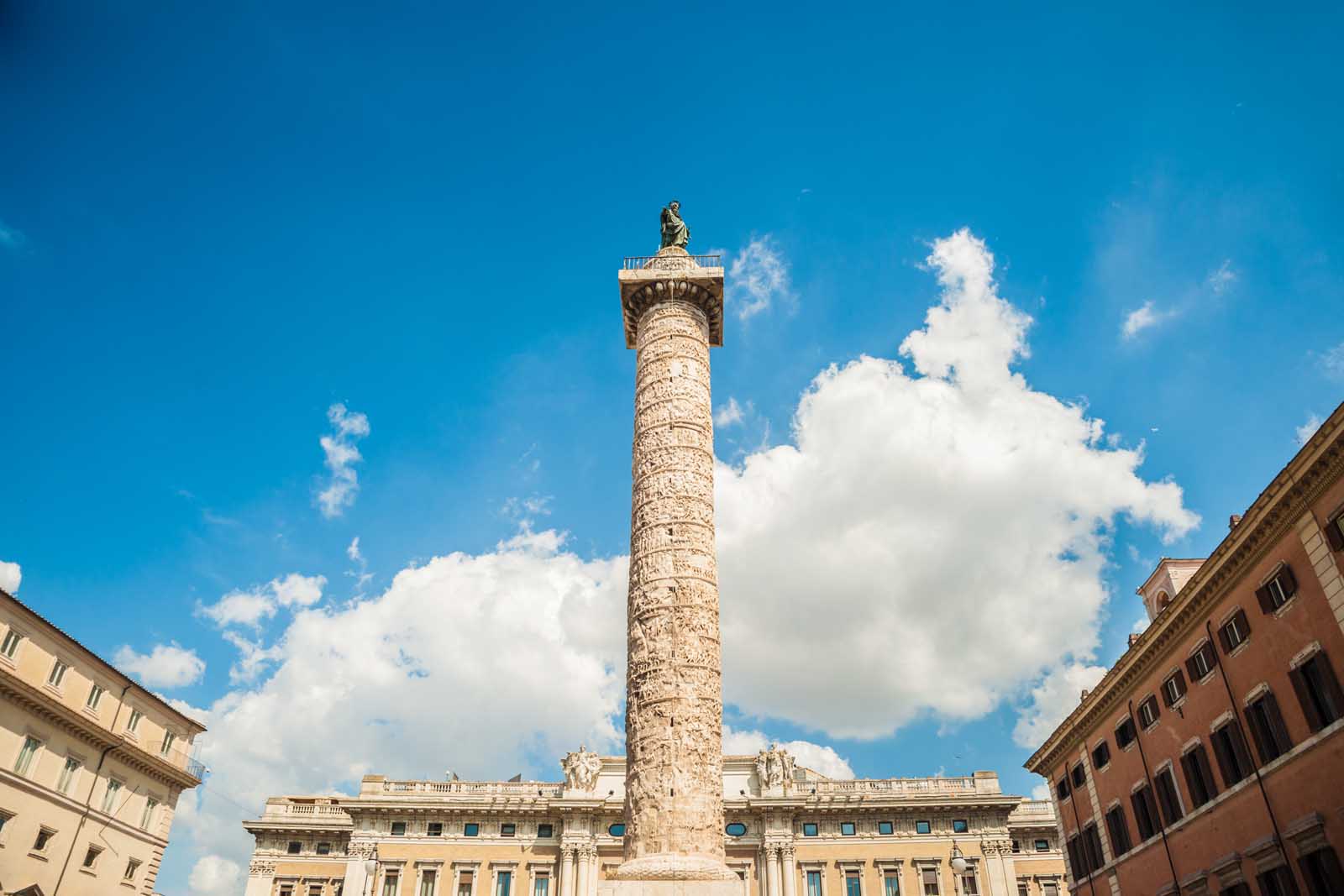
The Column of Marcus Aurelius, also known as Aurelian Column, is not as well known as Trajan’s Column but it is worth a visit as it is the other of the best preserved columns from ancient times. It stands in the Piazza Colonna and was erected in 193 AD at the Temple of Marcus Aurelius. The temple is no longer there, but the column remains standing at a height of 39 meters. (129 feet)
19. Mausoleum of Augustus
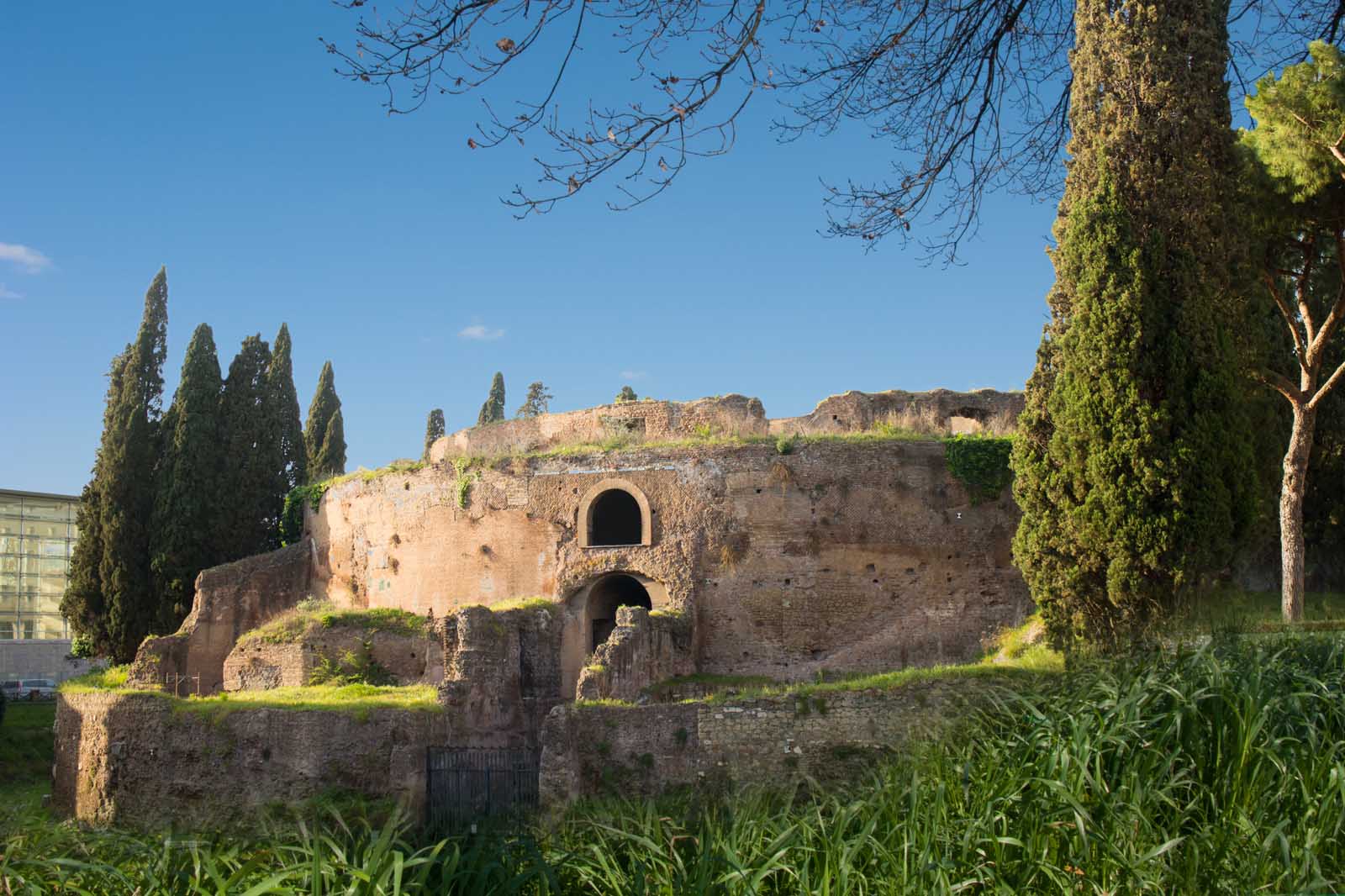
The Mausoleum of Augustus was built by the Roman Emperor Augustus as a final resting place for himself and his family. Augustus was the first emperor of Rome, ruling from 27 BCE until his death in 14 CE. The mausoleum was constructed during his lifetime and completed in 28 BCE.
It only opened to the public in 2021 after renovations and it is located on the eastern bank of the Tiber River, near the Campus Martius. Its reopening allows visitors to explore the remarkable architecture and learn about the life and legacy of Emperor Augustus, one of the most influential figures in Roman history.
20. Piazza del Popolo
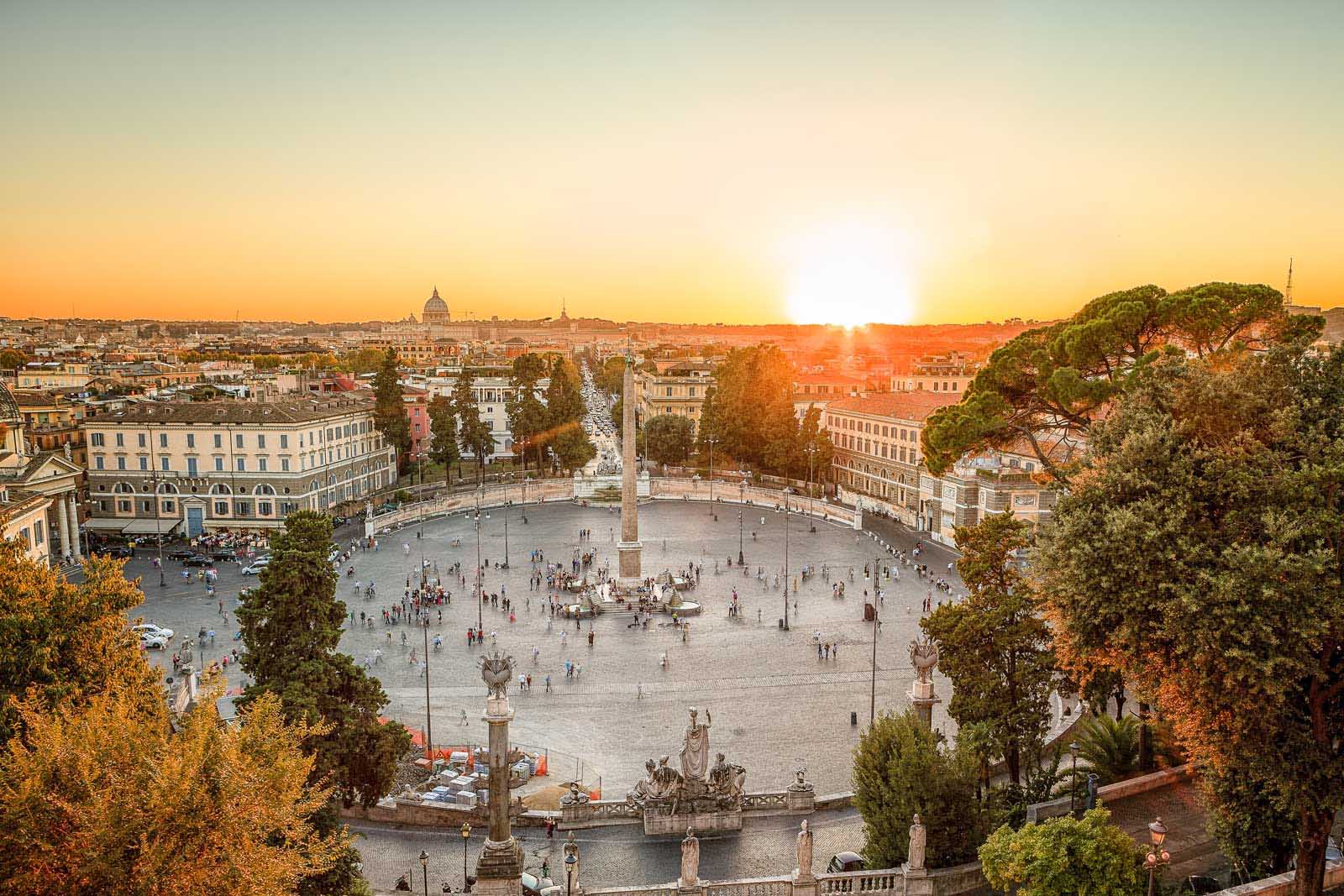
Piazza del Popolo, meaning “People’s Square,” is one of the largest and most famous squares in Rome. Located at the northern entrance of the historic center, it’s known for its huge obelisk and the twin churches of Santa Maria in Montesanto and Santa Maria dei Miracoli.
The name “Piazza del Popolo” was given to the square in the Middle Ages when it was used as a public space for executions and festivities. The square underwent significant renovations in the 19th century under the direction of architect Giuseppe Valadier, who redesigned it to its present-day appearance.
At the center of Piazza del Popolo stands the Egyptian Obelisk of Ramesses II, which dates back to ancient Egypt and was brought to Rome in 10 BC. It is one of the tallest obelisks in Rome.
Piazza del Popolo offers beautiful panoramic views of the Eternal City where you can enjoy sweeping views of Rome, the River Tiber, and the surrounding hills.
21. Capitoline Hill
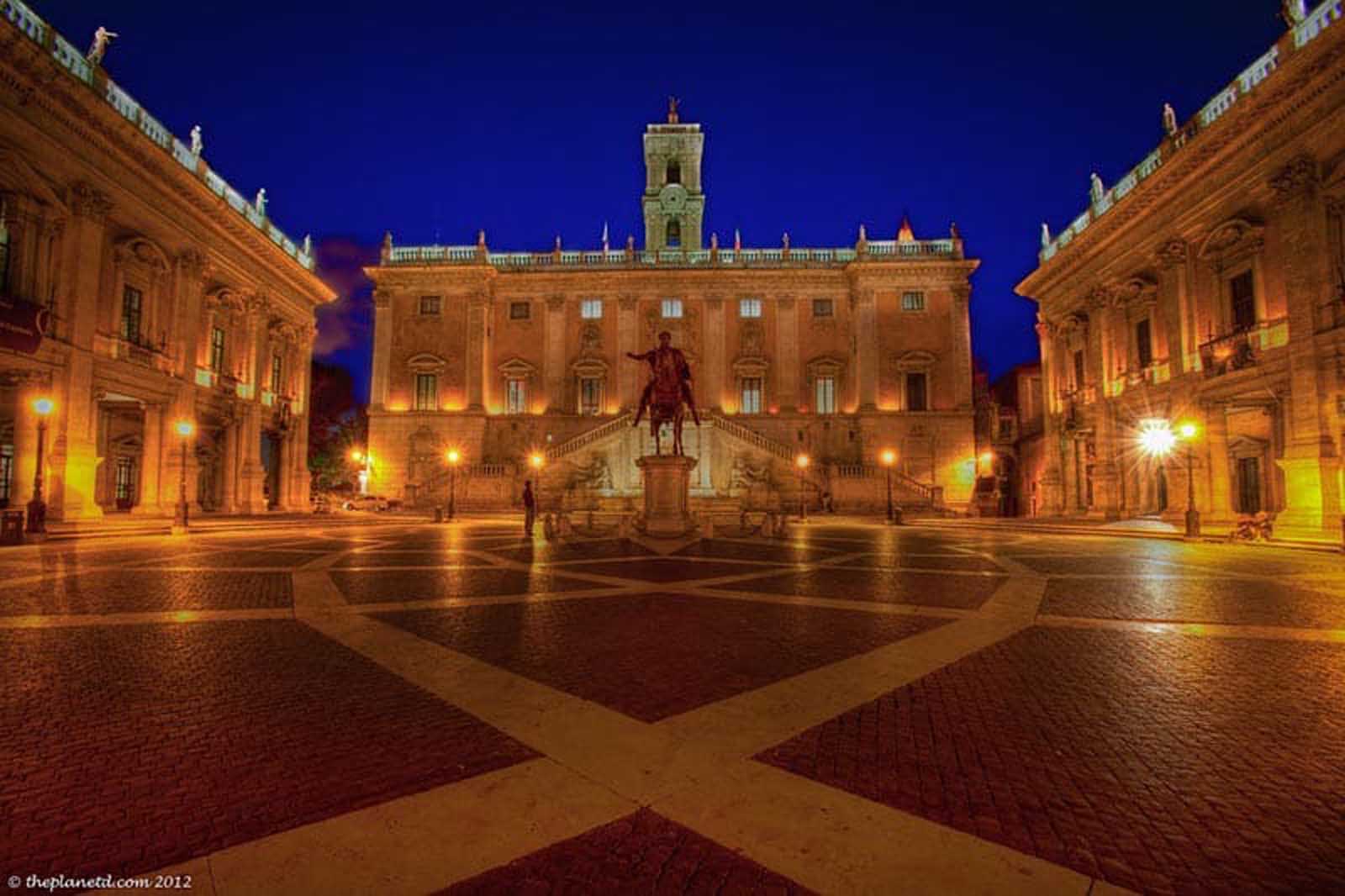
Capitoline Hill is the smallest of the seven hills of Rome but has one of the best views in Rome. It has a long history dating back to ancient times and in a similar vain to America’s Capitol Hill, this is what Romans saw as their Capitol. It was also prominent in ancient Roman mythology and religion associated with the Roman God Jupiter. Some of the temple dedicated to Jupiter Optimus Maximus is still standing. There were other temples dedicated to Juno, and Minerva filling out the Capitoline Triad that was built on the hill.
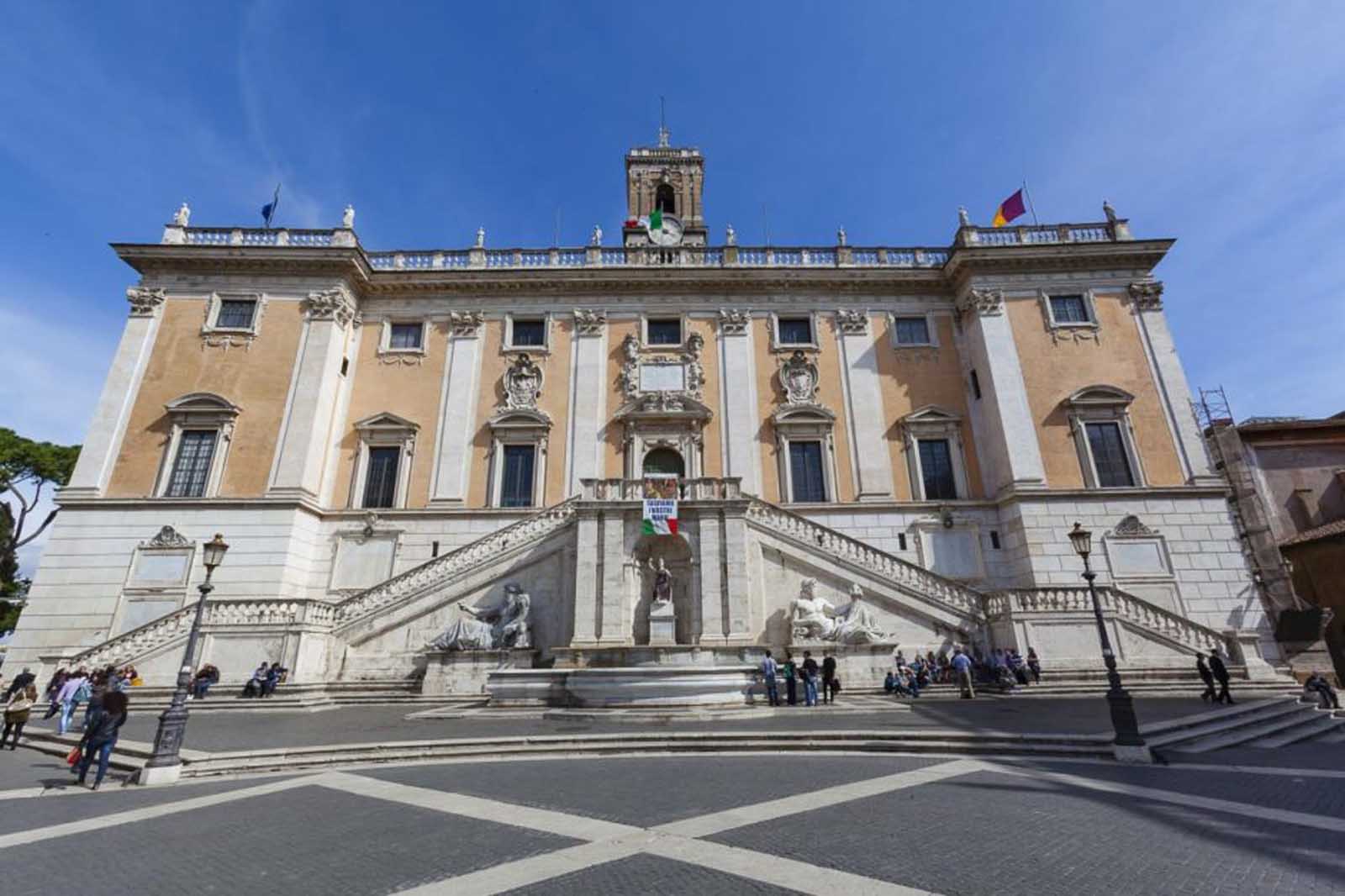
The architectural ensemble on Capitoline Hill was redesigned in the 16th century by Renaissance artist Michelangelo Buonarroti. And don’t miss the Piazza del Campidoglio, a trapezoidal-shaped square designed by Michelangelo. It features an elegant paving pattern and a central equestrian statue of Marcus Aurelius.
Make sure to visit the Capitoline museums which are a group of art and archeological museums in Piazza del Campidoglio, on top of the Capitoline Hill. They house a vast collection of ancient Roman statues, inscriptions, and other artifacts.
At the foot of the hill, there is the Mamertine Prison, an ancient prison where according to tradition, Saint Peter and Saint Paul were imprisoned.
Rome Landmarks – FAQs
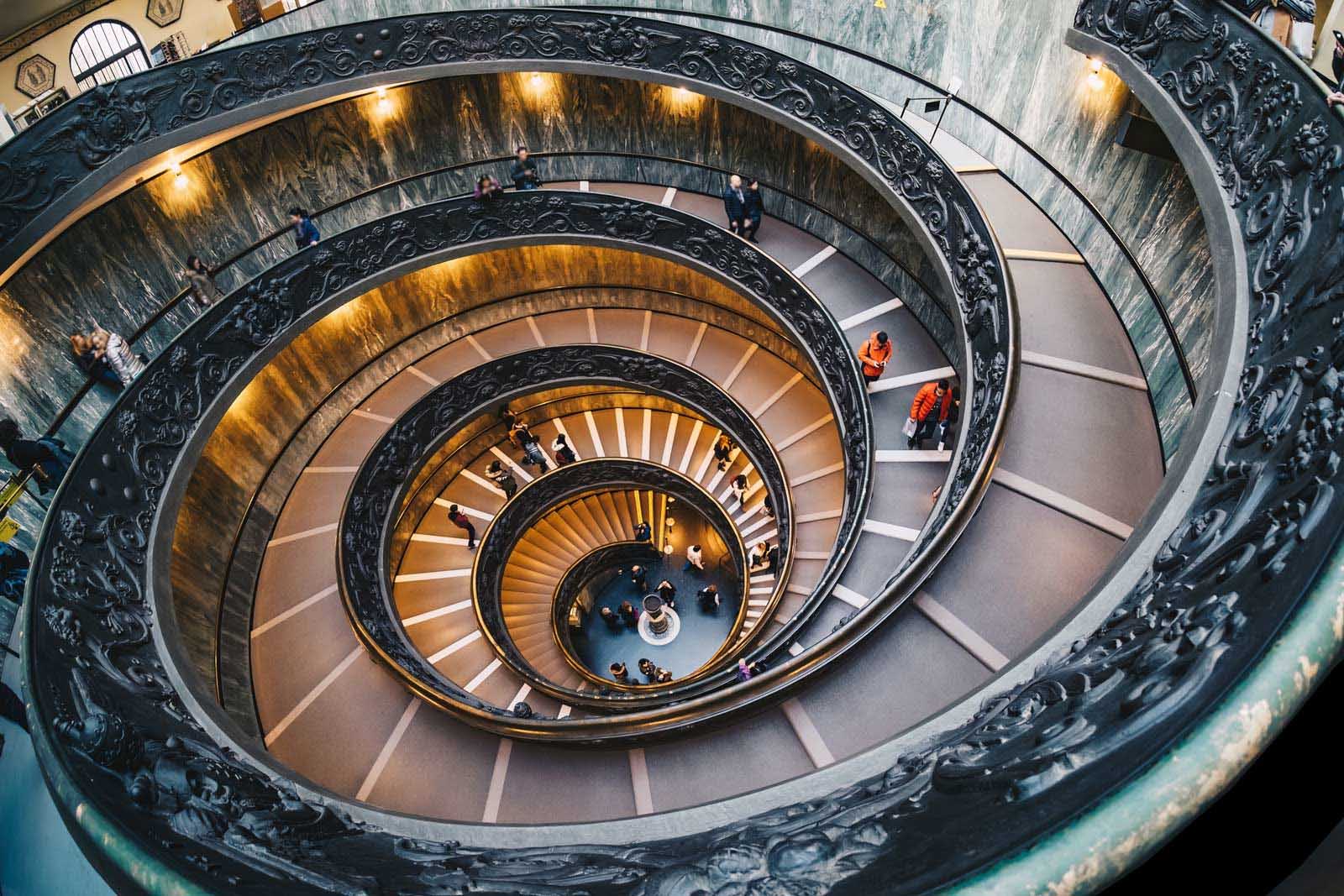
How Many Monuments are there in Rome
There are more than 200 ancient monuments in Rome.
What are the Most Famous Landmarks in Rome
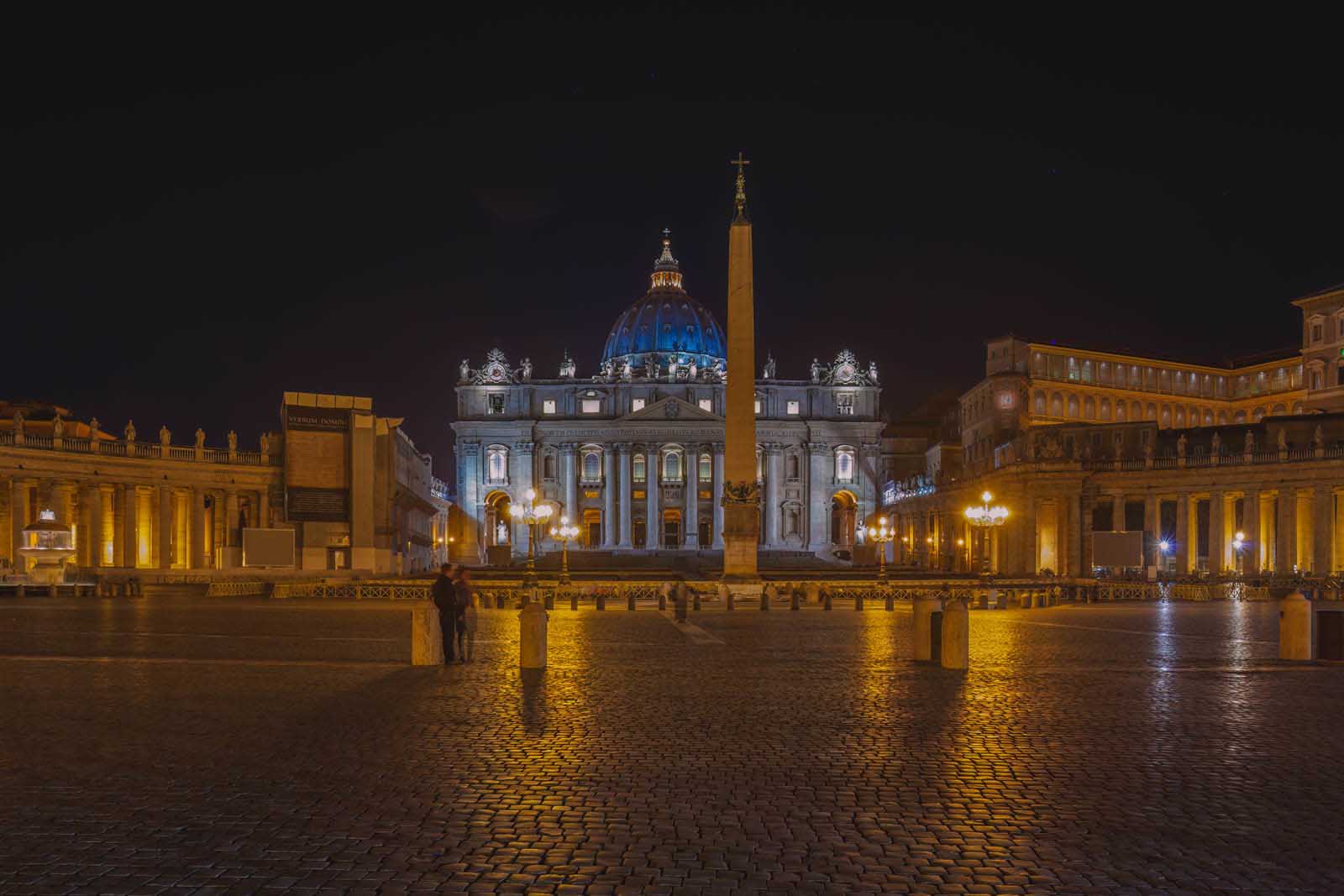
The most famous landmarks in Rome are The Colosseum, Spanish Steps, The Pantheon, and the Vatican.
What is the most Iconic Monument in Rome?
The Colosseum is definitely the most well known monument in Rome with more than 6 million visitors each year.
What is the Oldest Monument in Rome
The Temple of Hercules Victor is the oldest monument in Rome dating back to the 2nd century BC with the Pantheon being the second oldest. The Pantheon, now a Christian Church was originally built in 113-125 AD as a temple for Roman Gods.
And these are the most amazing monuments in Rome that you need to keep an eye out for on your Rome trip. There are definitely more landmarks as Rome is a living museum, so let us know what we missed. We love visiting Rome and will be back soon!

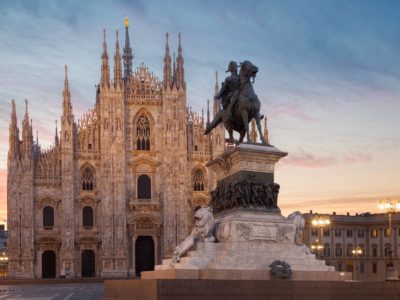
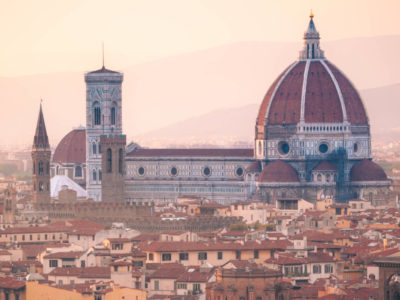
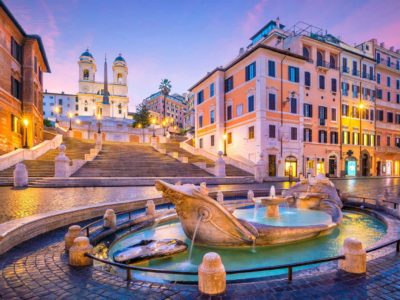
I have been to Rome 6 times and it’s one of my favourite cities. Many thanks for your great comments and photos. Your site is very interesting. Thanks again, Angelo from Montreal, Canada.
Really guys this Colosseum was looks so amazing and I feels some different I saw also thanks for sharing super blog with us.
Great Photos! Rome is a beautiful city. My dream is to go there again and again. Thank you for Sharing photos.
so much to see so little time….
have seem many pf these places and they are truly beautiful and amazing
Wow what a great pictures…A nigh time view of the Trevi Fountain is looking Gorgeous really nice photography…… I love this post and these photos…thanks for sharing with us…
Oh wow, some amazing photographs here – I love rome!
Thanks Surminga! We love rome too!
Thanks Surminga! We love rome too!
Traveling to Rome in August. These pictures have me even more excited to go now! So beautiful!
yes there is no word everybody posted what i am think……
really nice photography…..
i don’t know real Rome shows like that or not….
Tours and Holidays Post: Cheap vacation packages
Excellent photo of the Vittorio Emanuele II Monument in Rome.
—
St. Peter’s Basilica, the Pantheon, the Equestrian Statue of Marcus Aurelius? Very good.
—
The Trevi Fountain is wonderful, but it had problems recently! The Colosseum and the Roman Forum are amazing.
I especially love the one of the VE II monument, the flags and matching plantings – troppo bello!
Beautiful photos! Rome is one of my favorite cities.
I think these are the best photos I have ever seen on your blog! Awesome!
These images are intriguing and somewhat regal, fantastic to look at!
My favourite image is ‘The Watchful eye in the Non-Catholic Cemetery in Rome’ her long wings and the fact that she is headless is very unique in comparison to the other headstones.
Thank you Loco2. I think that this is the most captivating piece for sure. We were told that she has been replicated all over the world. There is actually a head there, it is just dangling very low. Dave chose to take the photo from this angle, it does make for a very captivating shot.
Great photos I appreciate their qality. Keep working so fine thanks for sharing !
Thanks Sergio, so glad you stopped by for a look.
Wow,
Great Rome..i love this post and these photos…thanks for sharing with us…
praveen
cyrusholiday.info
u may visit now
Now I know why the quote “Rome was not build in a day” Amazing art all over, just can’t wait to have my personal collections of such extraordinary work
Gorgeous! Rome is hard not to love 🙂
Wow! Awesome photos. Makes me want to get to Rome more than ever. Oh, and buy a good camera.
ow wow really wow i really like your amazing photos so much
Thanks a lot for your wonderful photos.
Came over once again and I am still mesmerized by the shots. Really Awesome!!
All I can say is… WOW! I never thought the Trevi Fountain would look so good in black and white. Plus that angel cemetery shot is stunning.
Great shots. We didn’t have time to visit Rome on this trip to Italy since we have both been there before, but I know we will be back. We stayed at a pretty awesome hostel there while in transit though.
You guys are both brilliant photographers, and brilliant photoshoppers 😀
I’ve seen better… not. Amazing pictures Dave. Hopefully it will be as beautiful in real life when we are there next month. Going to have to learn some tips from you some day soon!
Fabulous pics, makes me desperate to go back to Europe and Rome!
Those non-Catholics have a kickass cemetery!! Awesome pics!
These are phenomenal pictures!
We feel you! Despite our best intentions we fell in love with Italy as well.
Damn it, Europe. Why can’t we quit you?!
Hahahahahaha!!!
Stunning photos, guys! One of my favorite photo galleries you’ve ever posted. Love the dream-like quality…
Spectacular photo collection, Julius Ceasar would be very proud 😉
Just wonderful shots! Each shot is so lively, looks so real. Great skills!! Thanks for sharing.
Wow,
Great Rome..i love all of these photos..thanks for sharing this informative post for me..
praveen
mytravelo.com
u may visit now
Absolutely amazing photos guys. Is there somewhere you run through your equipment and post processing techniques for shots such as these? I’m wondering if you could make my home time of Swindon, England, look as attractive as this too?!
Hey Will, I used long exposures and a 6 stop ND filter for the Trevino Fountain to get the smooth water effect. All on a tripod of course.
Beautiful! REally beautiful photos Dave!!
Amazing photos! What a great opportunity for traveling photographers such as yourselves.
Stunning pictures of my favorite places. Thank you very much!
Excellent!
nice post..i love all of these photos..thanks for sharing this informative post..
praveen
mytravelo.com
u visit now
Incredible photos Dave. Love the Roman forum in particular, great work!
Wow, I just recently went through my old photos from Rome and these put them to shame. Amazing photography as always! I want to go back now!
Thanks Dean. That’s the great thing about Rome, there is always so much more to see with each visit.
Breath taking photos.
Thanks Pamela. 🙂
Fantastico!
Thanks Cam, much appreciated
So wanna go back to Rome now! Great pictures!!!
Rome Rocks!
Holy cow, AMAZING photos!!
Gorgeous as ever Dave!
Cheers Sarah! Thanks
WOW. that is all.
How do you do it? Incredible! And considering how many photos I’ve seen of Rome these feel like a fresh take on the city.
Thank you Leigh, that is a huge compliment. Rome was a very inspiring city. I only wish I had more time there and better weather. But then again, I’d have too many photos to choose from if we had too much time there.
Stunning photos, you have truly captured the beauty of Rome.
Thanks Michelle. It’s a beautiful city.
Wow! I’m so glad I threw in extra coins in the Trevi the last time we were there. I want to go back already. Stunning photos!
I agree, I want to go back too and we only just left a week ago!
WOW!!!!!!! These pictures are just incredible.
Thanks Andi, always awesome to hear form you. 🙂
AMAZING photos, but my favorite is definitely the Trevi Fountain – wonderful new perspective on it.
Wow, thanks John. The best time to take a photo of the Trevi Fountains was at night. It was so crowded during the day, but after midnight, it’s nearly deserted.
Absolutely GORGEOUS photos!
Stunning photographs